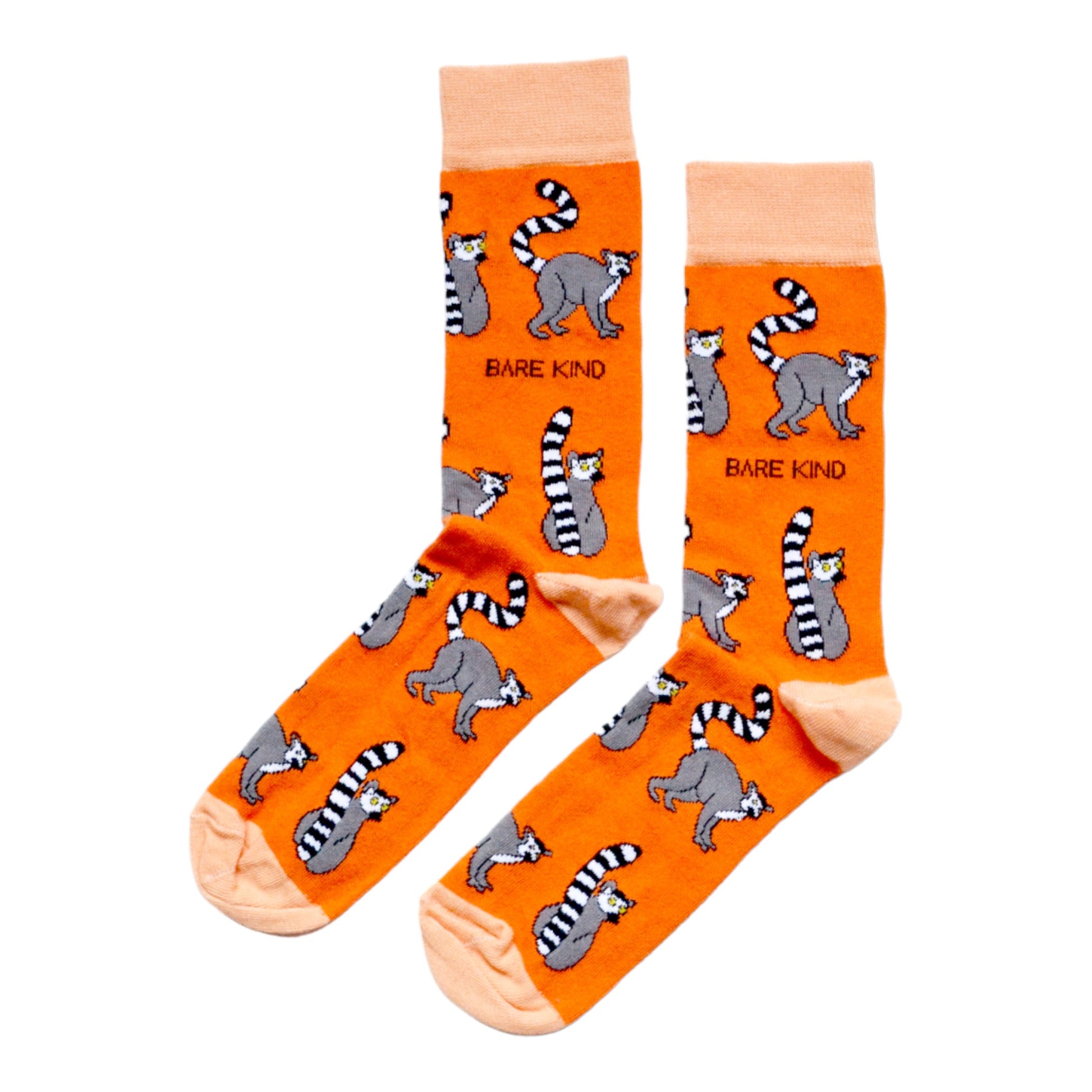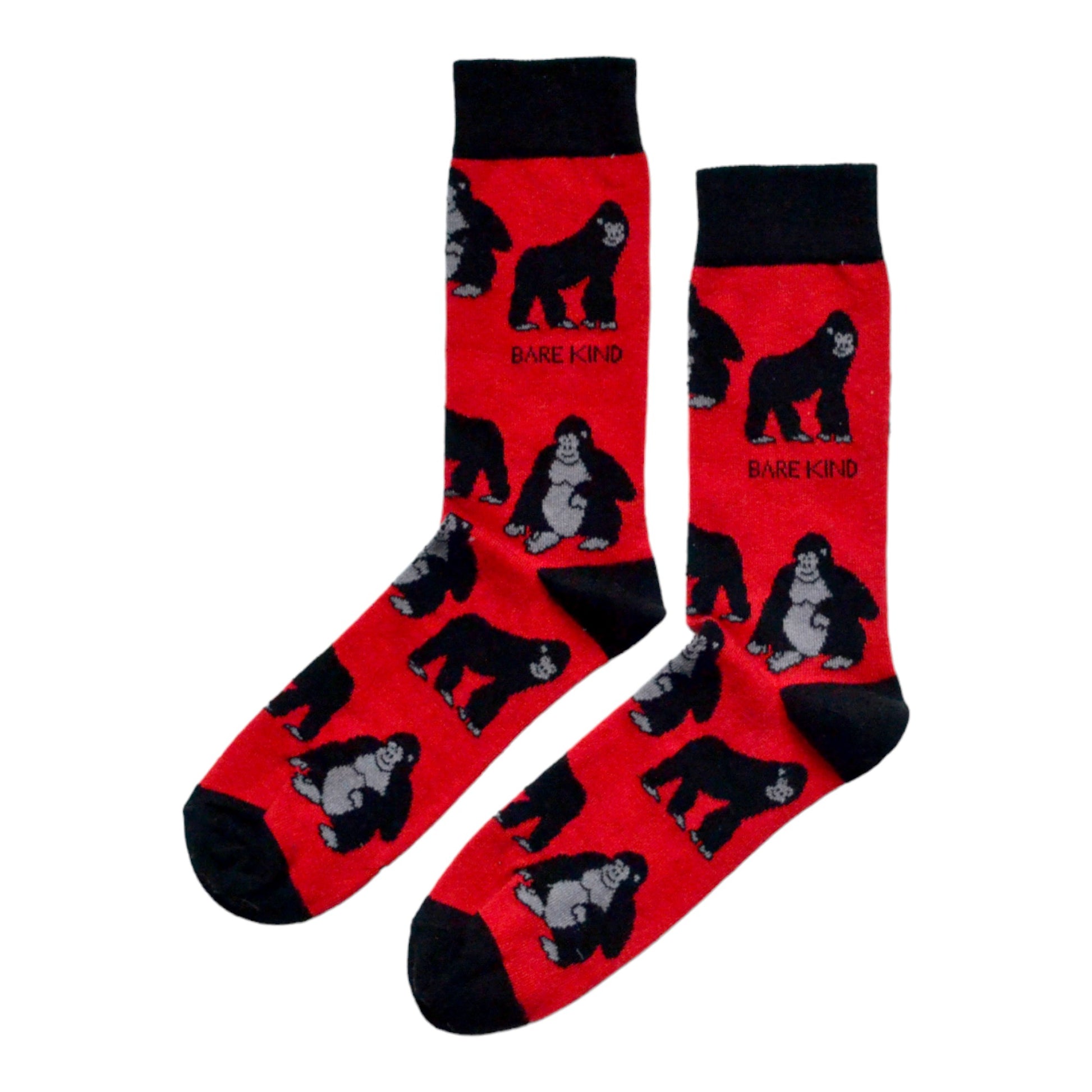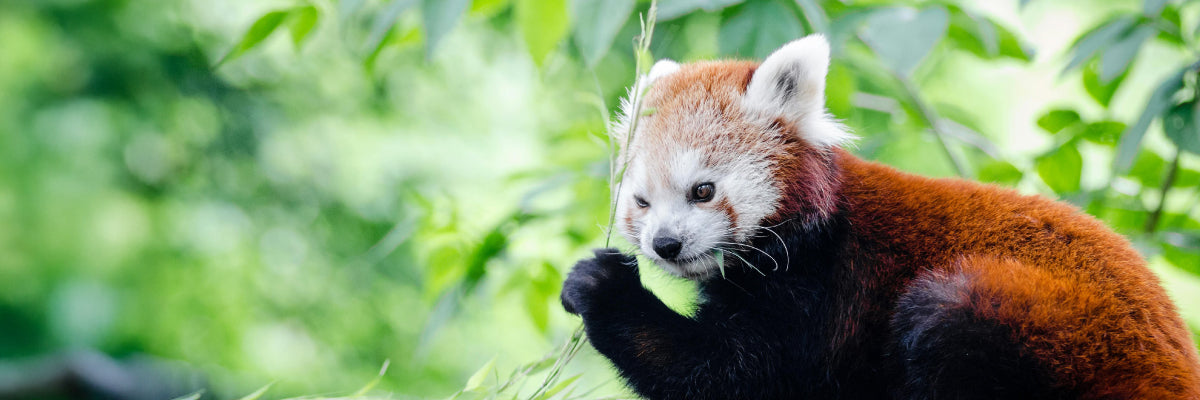
Save the Rainforest with Rainforest Trust
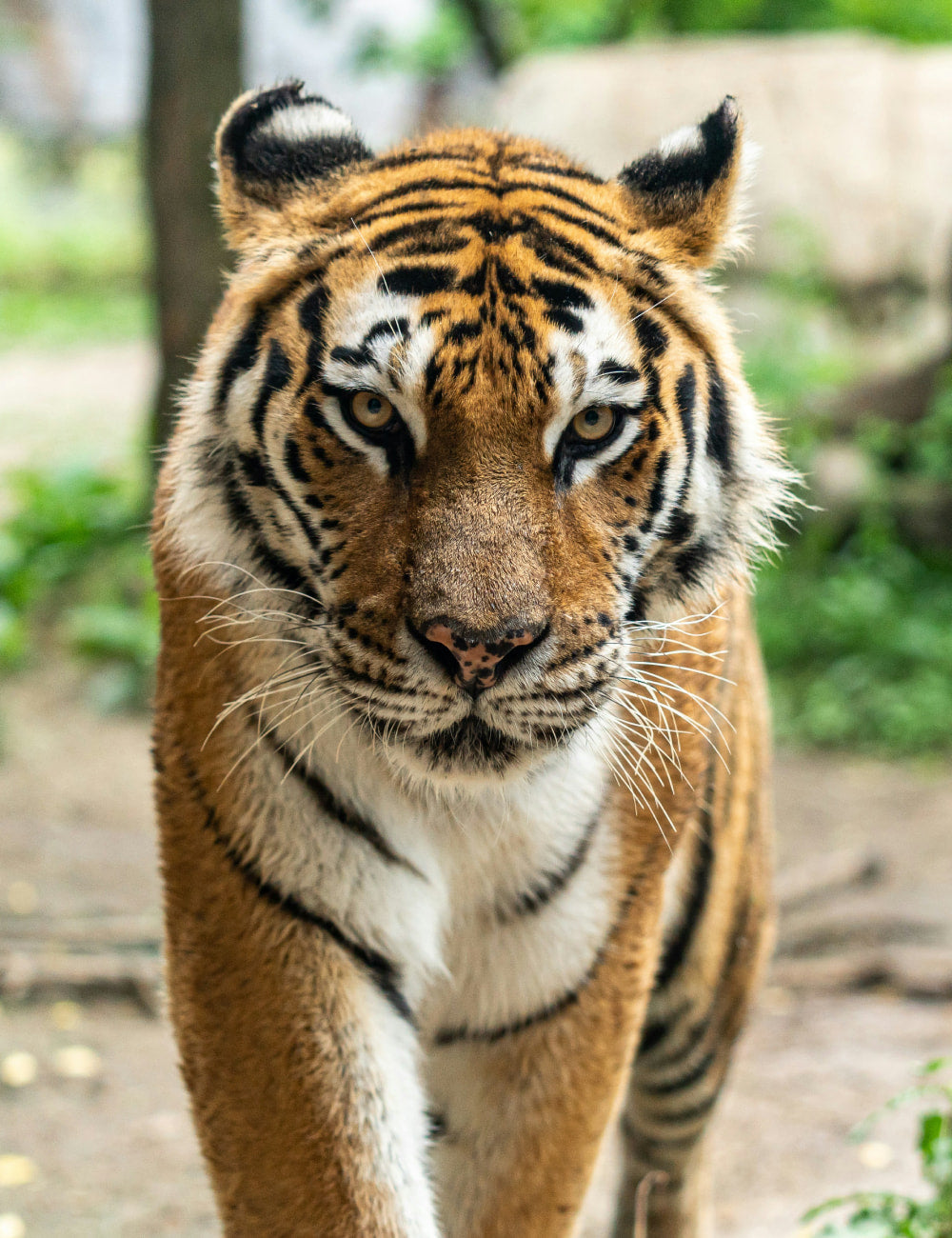
Rainforests are home to a wide variety of animals, many of which are endangered or at risk due to habitat loss, hunting, and climate change. Bare Kind currently has 9 socks in our rainforest range which includes: frogs, lemurs, gorillas, sloths, leopards, red pandas, black panther, and tigers. We're able to support projects that directly save these animals with our 10% of profits donation, as well as, save their environment too.
Large carnivores like leopards, black panthers, and tigers are also under threat in rainforests due to habitat loss and hunting. For example, the Sumatran tiger, found in the Indonesian rainforest, is classified as critically endangered, with only an estimated 400 individuals remaining in the wild.
Protecting rainforest habitats and the animals that live in them is crucial for maintaining the balance of the ecosystem and ensuring the survival of these species. By supporting Rainforest Trust UK, we can help to preserve these critical ecosystems and the animals that depend on them.
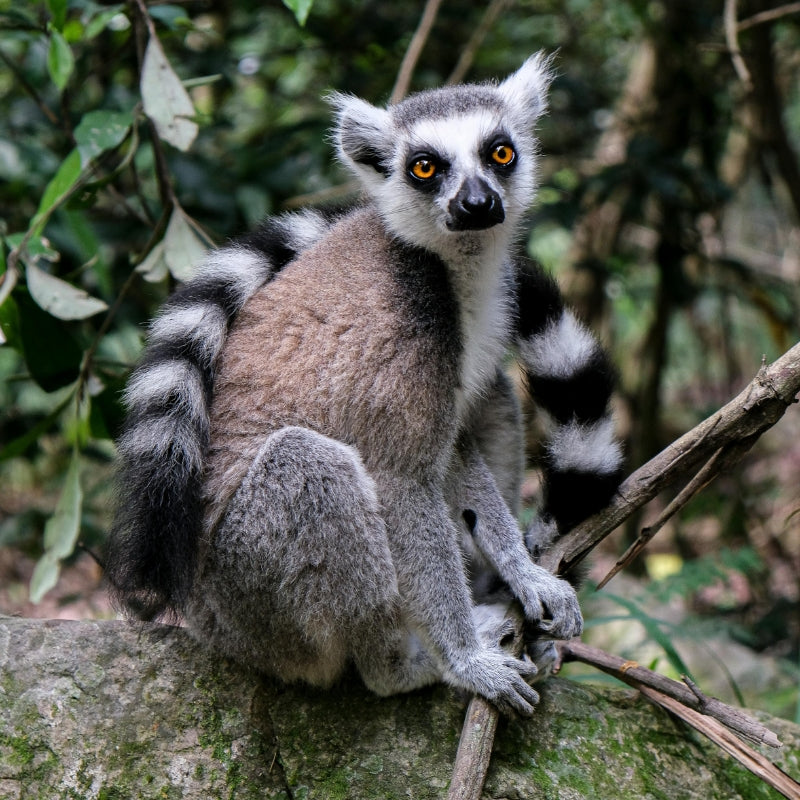
Lemurs are a unique group of primates that are endemic to Madagascar, an island nation off the coast of Africa. They are considered to be one of the most endangered groups of primates in the world, with many species facing significant threats to their survival.
One of the biggest threats to lemurs is habitat loss, primarily due to deforestation. Madagascar's forests have been cleared for agriculture, logging, and other human activities, leading to the destruction of critical habitats for lemurs. According to the International Union for Conservation of Nature (IUCN), over 90% of Madagascar's forests have been lost since humans first arrived on the island.
Resultantly, many lemur species are now listed as "Critically Endangered" or "Endangered" by the IUCN. The Greater Bamboo Lemur is listed as "Critically Endangered," with an estimated population of fewer than 250 individuals left in the wild. Similarly, the Indri, the largest species of lemur, is listed as "Endangered," with a population decline of over 80% in the past three generations.
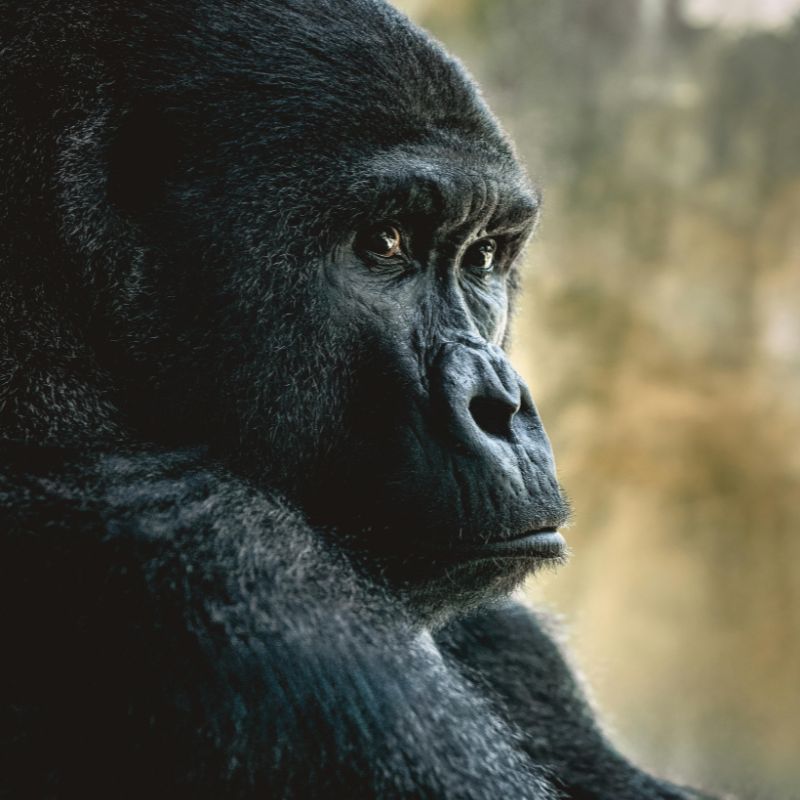
Gorillas are one of the largest and most recognisable primates in the world, and they are found in the rainforests of central and east Africa. Unfortunately, they are also one of the most endangered groups of animals on the planet, facing significant threats to their survival.
One of the biggest threats to gorillas is habitat loss, primarily due to deforestation and mining activities. As forests are cleared for agriculture, logging, and other human activities, gorillas lose critical habitats and food sources. It is estimated that over 80% of the gorilla's habitat has been destroyed over the past few decades.
As a result of habitat loss and other threats, gorillas are now listed as "Critically Endangered" or "Endangered" by the International Union for Conservation of Nature (IUCN). For example, the Mountain Gorilla, one of two subspecies of eastern gorillas, has an estimated population of just over 1,000 individuals left in the wild.
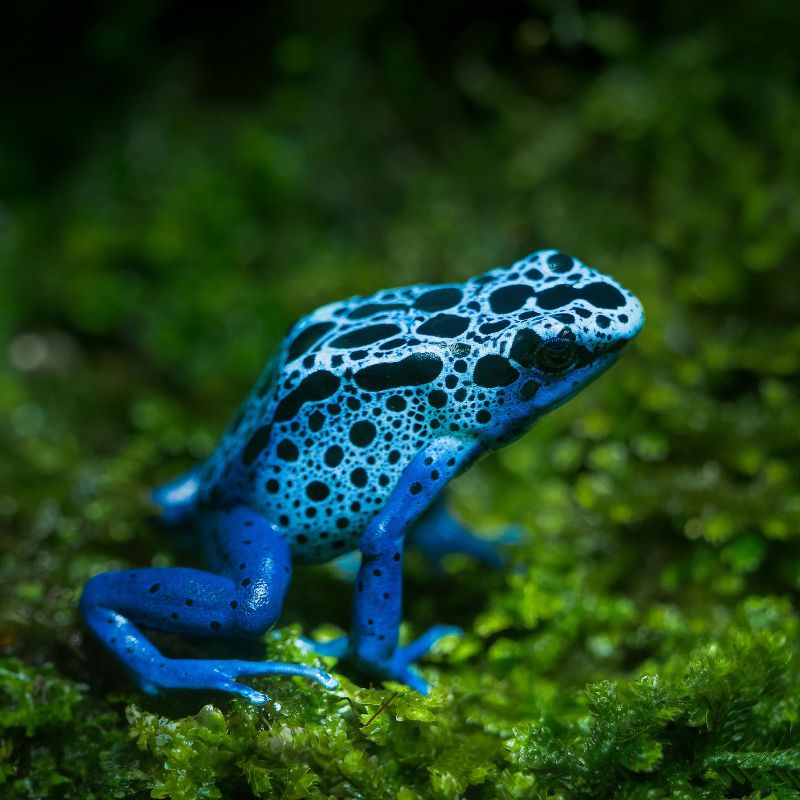
Frogs play a crucial role in rainforest ecosystems as they are important indicators of the health of the ecosystem. However, over 30% of all known amphibians are at risk of extinction, largely due to habitat destruction and climate change.
Blue poison dart frogs, also known as blue poison arrow frogs, are brightly coloured amphibians found in the rainforests of Central and South America. The main threats to blue poison dart frog populations are habitat destruction and degradation due to deforestation, agriculture, and mining activities. As forests are cleared or degraded, these frogs lose critical habitats and breeding sites, making it difficult for them to survive.
In addition to habitat loss, blue poison dart frogs are also targeted by the illegal pet trade. These frogs are highly sought after for their striking colours and patterns, and are often sold in the international pet trade. The capture and transportation of these frogs for the pet trade can further reduce their populations, as well as introduce diseases and parasites to wild populations.
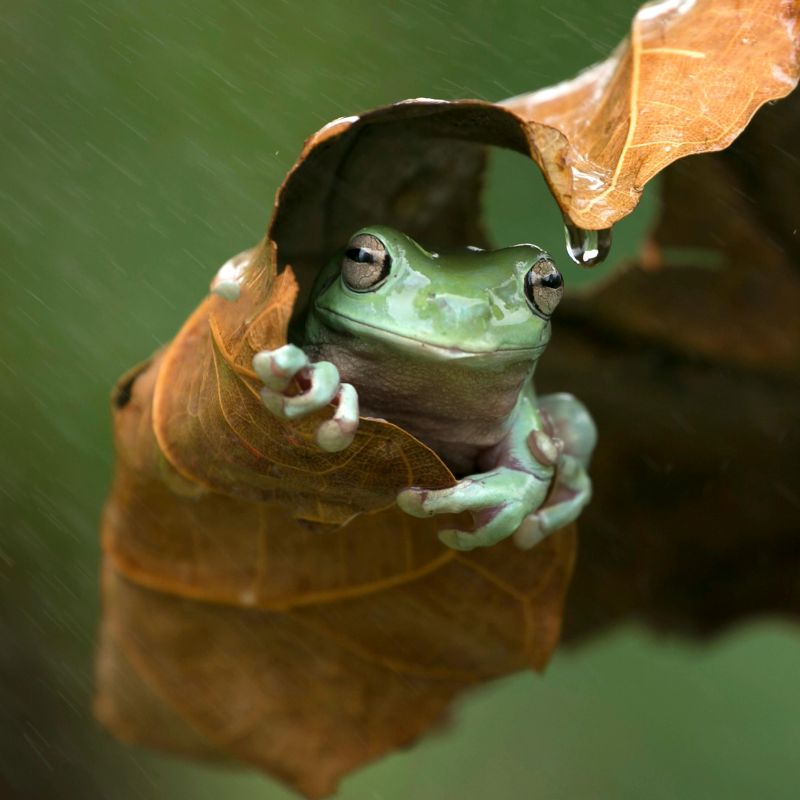
Part of the frogs that rely on the rainforest to thrive are tree frogs. These frogs are arboreal, meaning that they spend most of their time on trees. There are over 800 species of tree frogs on Earth, and they can be found on every continent except Antarctica.
Tree frogs come in various colors, with green being the predominant shade for many. They can be small enough to fit on the face of a thumbnail or large enough to be 6 inches long. Some have long, slender limbs while others have short, dumpy ones. Tree frog species like the red-eyed tree frog have three eyelids on each eye. Though their eyes are bright red, once they close all eyelids, they blend seamlessly into their surroundings .
The main threat to tree frogs is habitat degradation and the clearing of native vegetation for agriculture, mining, and other human development projects. Tree frogs are also great bioindicators. This means that they are a great indication of whether an ecosystem is thriving or otherwise. Therefore, an abundant population of tree frogs reveals ecosystem health. Consequently, a declining population shows that factors like climate change and environmental degradation have compromised ecosystem health.
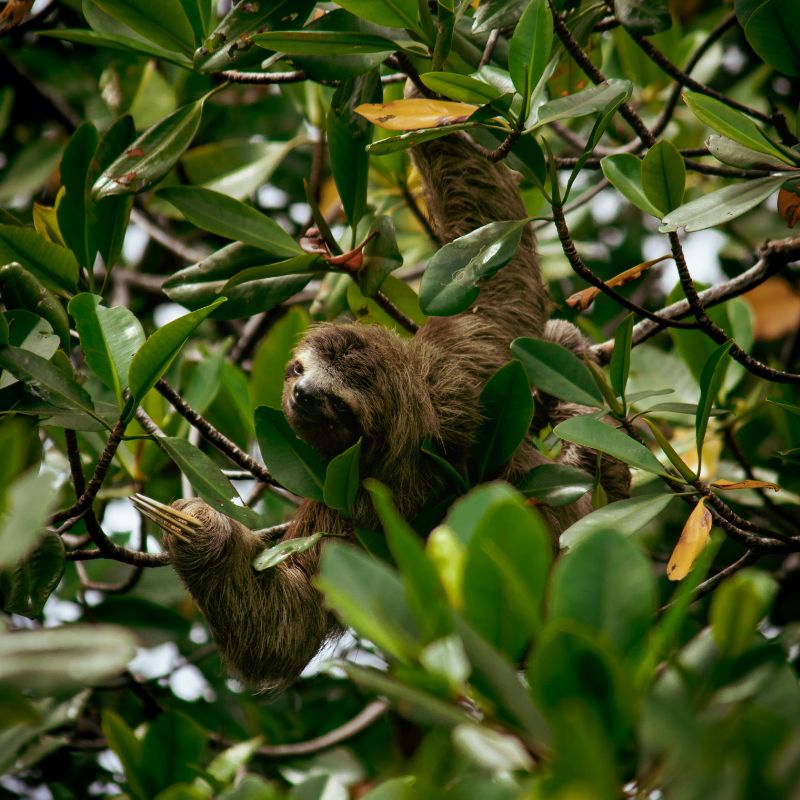
Sloths are a group of arboreal mammals found in the rainforests of Central and South America. There are two main species of sloths: the two-toed sloth and the three-toed sloth. While they are not currently classified as endangered, they are facing threats that put their populations at risk.
One of the main threats to sloths is habitat loss and fragmentation due to deforestation. As forests are cleared for agriculture, logging, and urbanisation, sloths lose critical habitats and food sources. According to the Rainforest Trust UK, it is estimated that over 50% of the world's rainforests have been destroyed over the past few decades, putting many species including sloths at risk.
In addition to habitat loss, sloths also face threats from the illegal pet trade and hunting for their meat and body parts. Sloths are often sold as pets in the illegal wildlife trade, and they are also hunted for their meat, which is considered a delicacy in some areas.
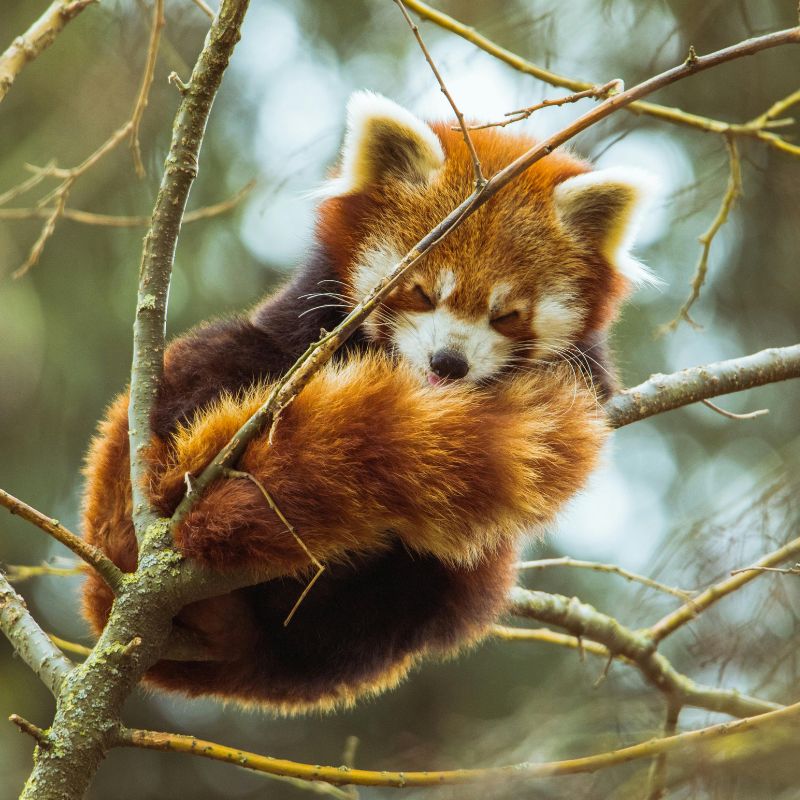
Red pandas are small, arboreal mammals found in the temperate forests of the Himalayas and southwestern China. Despite their name, they are not closely related to giant pandas. Unfortunately, red pandas are facing significant threats that put their populations at risk.
The primary threat to red pandas is habitat loss and fragmentation due to deforestation and human activities such as logging, farming, and urbanisation. As forests are cleared for agriculture, infrastructure development, and human settlements, red pandas lose critical habitats and food sources. According to the International Union for Conservation of Nature (IUCN), it is estimated that red panda populations have declined by about 50% over the past three generations.
Red pandas also face threats from hunting and the illegal wildlife trade, with their fur and body parts being sold for various purposes. These factors, coupled with their low reproductive rate and susceptibility to disease, make them especially vulnerable to extinction.
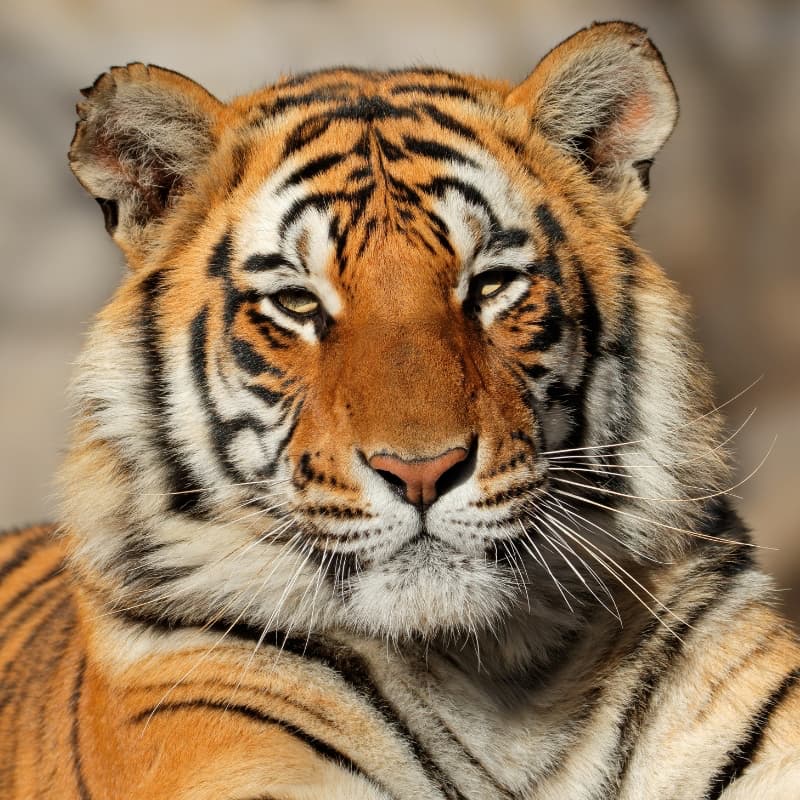
According to the World Wildlife Fund (WWF), there are currently only around 3,900 wild tigers left in the world, and their populations have declined by over 95% since the turn of the 20th century. The main threats to tigers are habitat loss, poaching for their body parts, and human-tiger conflict.
As forests and other natural habitats are cleared or fragmented, tigers lose critical habitats and prey species, making it difficult for them to survive. Poaching for tiger body parts such as bones, skin, and organs is also a major threat, as these parts are highly valued in traditional medicine and as luxury goods. Finally, human-tiger conflict can arise as tigers come into contact with humans living in or near their habitats, leading to retaliatory killings and further reducing their populations.
Conservation efforts for tigers include habitat protection, restoration, and management, as well as efforts to reduce poaching and human-tiger conflict. Some organisations are also working to promote sustainable livelihoods for local communities living near tiger habitats, in order to reduce their dependence on natural resources that may conflict with tiger conservation. Their status as an endangered species highlights the urgent need for continued conservation action to protect these magnificent animals and the habitats they depend on.
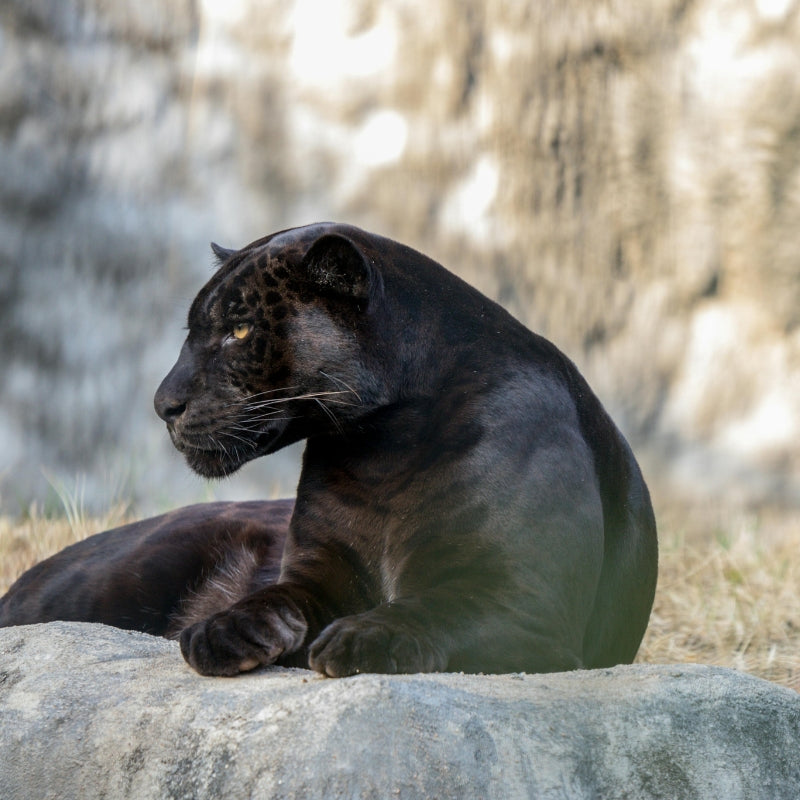
Black panthers are actually melanistic leopards or jaguars, meaning they have a genetic mutation that causes their fur to appear black. They are found in various habitats, including rainforests, but they are not a separate species. Nonetheless, black panthers are facing threats that put their populations at risk. As of 2021, the IUCN lists leopards as "Vulnerable" on their Red List of Threatened Species, while jaguars are listed as "Near Threatened."
Like other big cats, black panthers are threatened by habitat loss and fragmentation due to deforestation and human activities such as logging, agriculture, and urbanisation. As forests are cleared, panthers lose critical habitats and prey species, making it difficult for them to survive. Leopard populations have declined by more than 30% over the past three decades.
Black panthers also face threats from hunting and the illegal wildlife trade, with their fur and body parts being sold for various purposes. Additionally, they are often hunted as livestock predators, with humans perceiving them as a threat to their livelihoods.
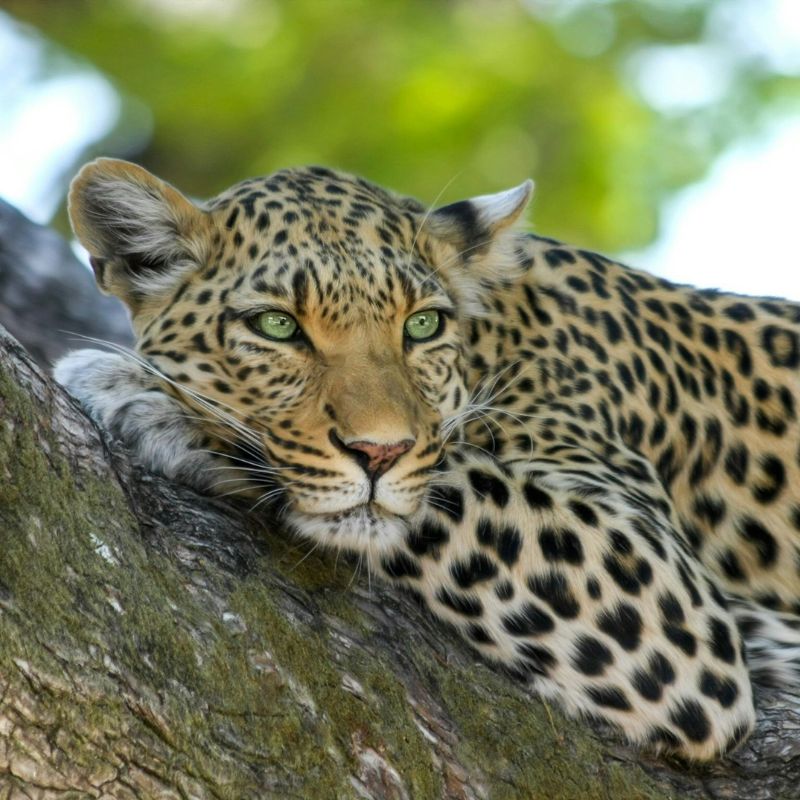
Leopards are found in a wide range of habitats including grasslands, forests, and deserts, but are not typically associated with rainforests. However, in some parts of Southeast Asia, leopards can be found in the rainforest habitats there. Regardless of their habitat, leopards are at risk due to habitat loss, fragmentation, and poaching.
According to the International Union for Conservation of Nature (IUCN), leopard populations are declining in many parts of their range, and they are classified as a vulnerable species. The main threats to leopard populations are habitat loss and fragmentation, as well as poaching for their skins and body parts.
As forests and other natural habitats are cleared or fragmented, leopards lose critical habitats and prey species, making it difficult for them to survive. Poaching for leopard skins and body parts, which are highly valued in the illegal wildlife trade, further reduces their populations. In some areas, leopards may also come into conflict with humans as they prey on livestock or come into contact with people living in or near their habitats.
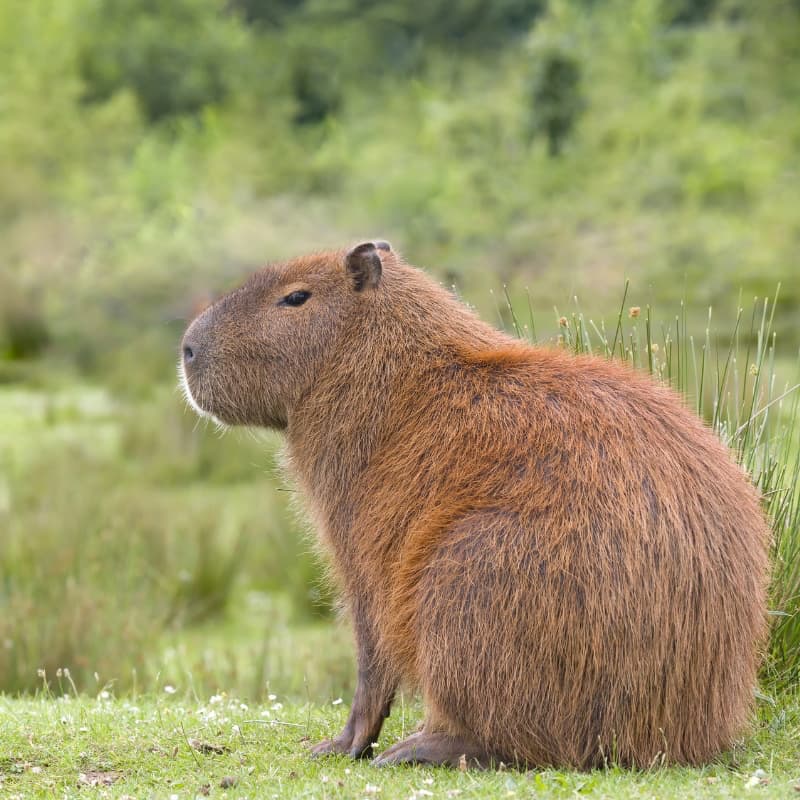
Capybaras are the world’s largest living rodent. They are actually quite big, roughly the size of a golden retriever. If you ever meet one, don’t worry—it’s all love! Capybaras are known for their gentle nature and are basically the zen masters of the animal kingdom. They love lounging in the water or sunbathing with their squad, and they seem to get along with pretty much everyone. Capybaras are semi-aquatic, which means they spend a lot of time swimming, cooling off, and just floating around. They even sleep in the water sometimes, with just their noses poking out. Capybaras are not currently threatened or endangered. However, their population is threatened by deforestation and habitat destruction. We need all hands on deck to ensure that these lovely rodents stick around to keep brightening up our days.
Some species, like the gorilla, are critically endangered, with fewer than 5,000 individuals remaining in the wild.
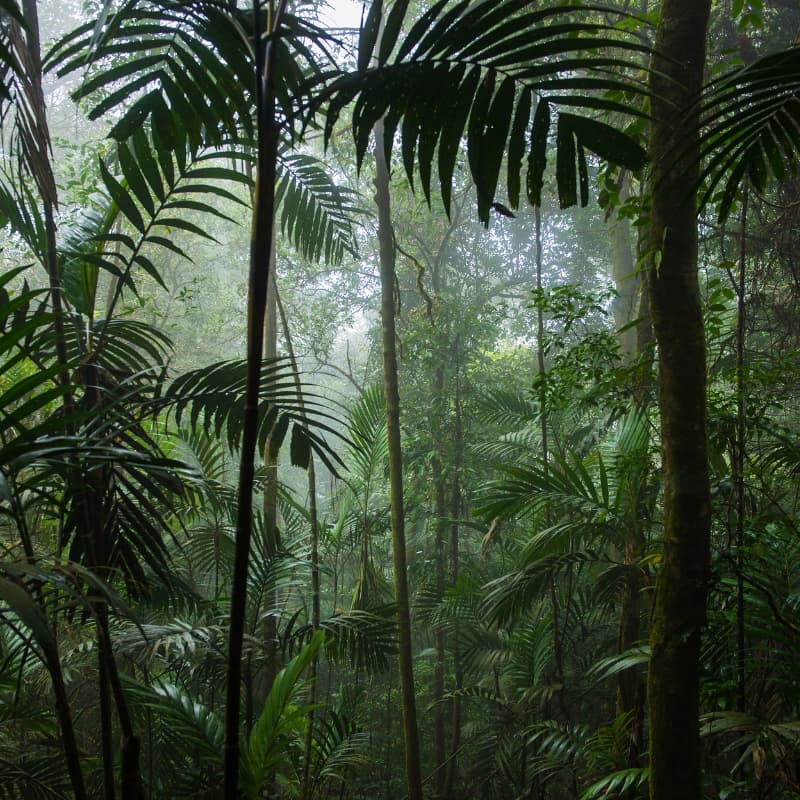
Rainforest Trust UK is a charity that works to protect rainforests and endangered species around the world.
One of their main projects is the Conservation Action Fund (CAF), which aims to protect threatened species by supporting local conservationists and communities to create and manage protected areas.
The CAF largely focuses on protecting rainforest habitats, home to several endangered species - including but not limited to the animals we help save with our socks.
Rainforests are some of the most biodiverse and important ecosystems on the planet, yet they are under threat from deforestation and habitat loss due to human activities such as logging and agriculture. That's why, through CAF, Rainforest Trust UK, with local communities and conservationists, protect and restore vital rainforest habitats.
These initiatives preserve our world's beautiful rainforests for future generations and, more importantly, protect the species that depend on them. This work is critical, both for species survival, and the health of our planet's ecosystems as a whole.
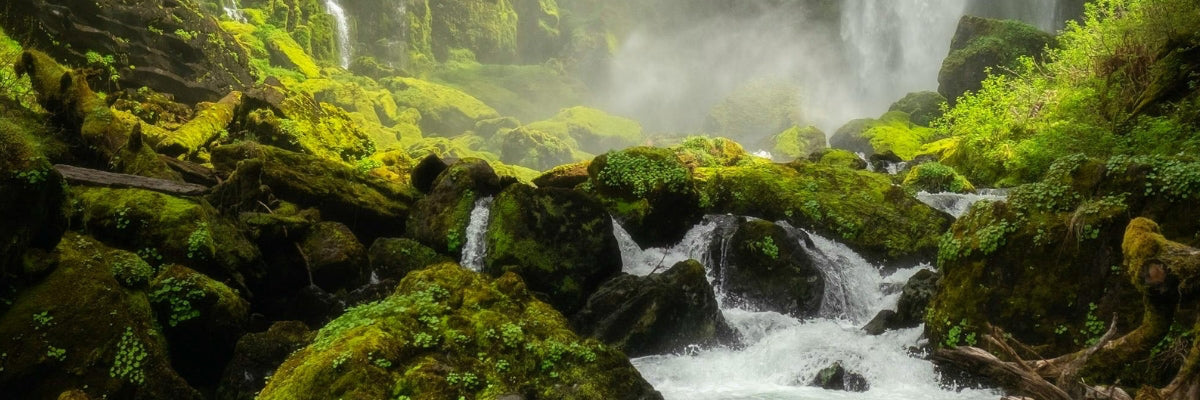
We funded the protection of 924 acres of rainforest land
We donate 10% of profits from your jungle socks to
Bare Kind
Save the Tigers Bamboo Socks
Share
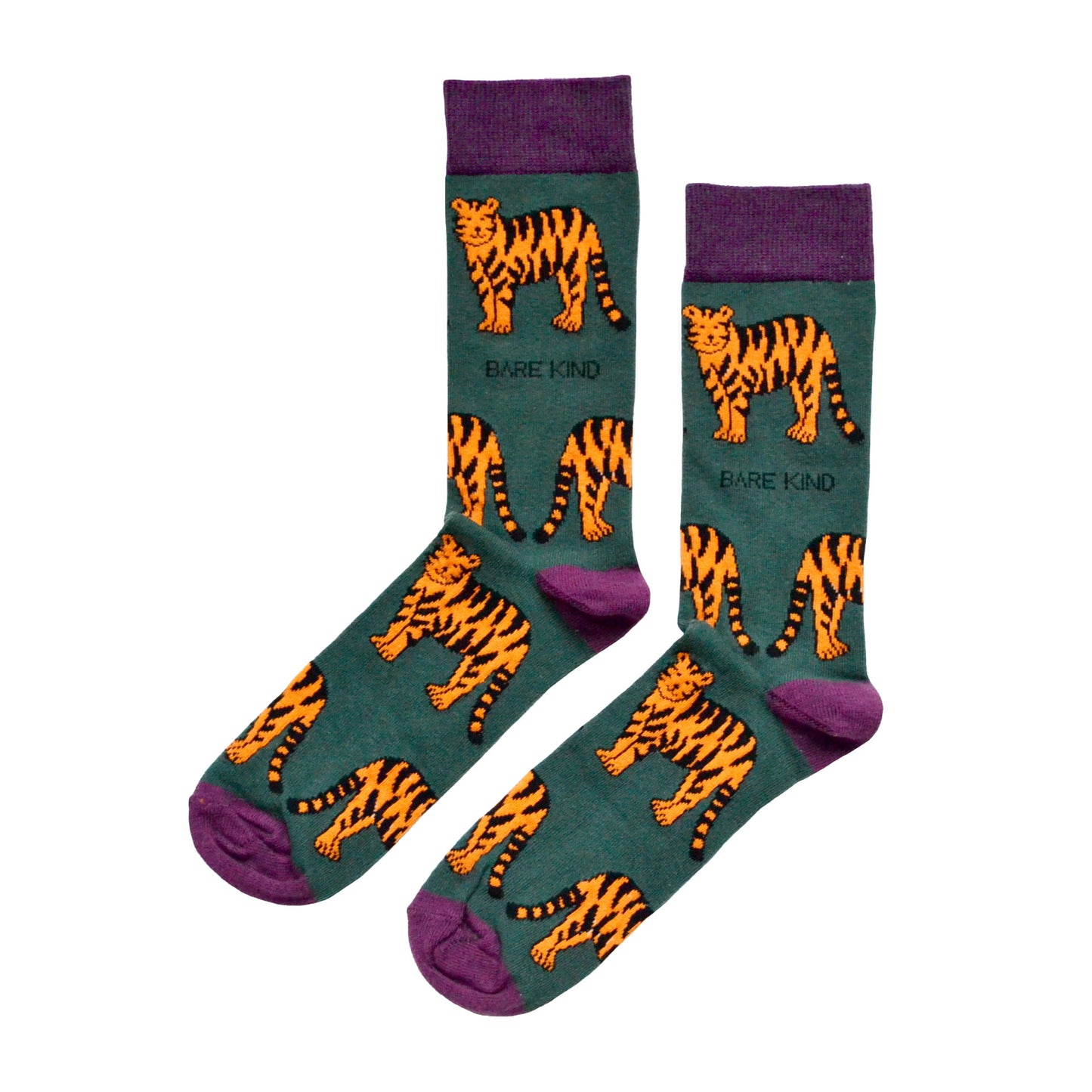
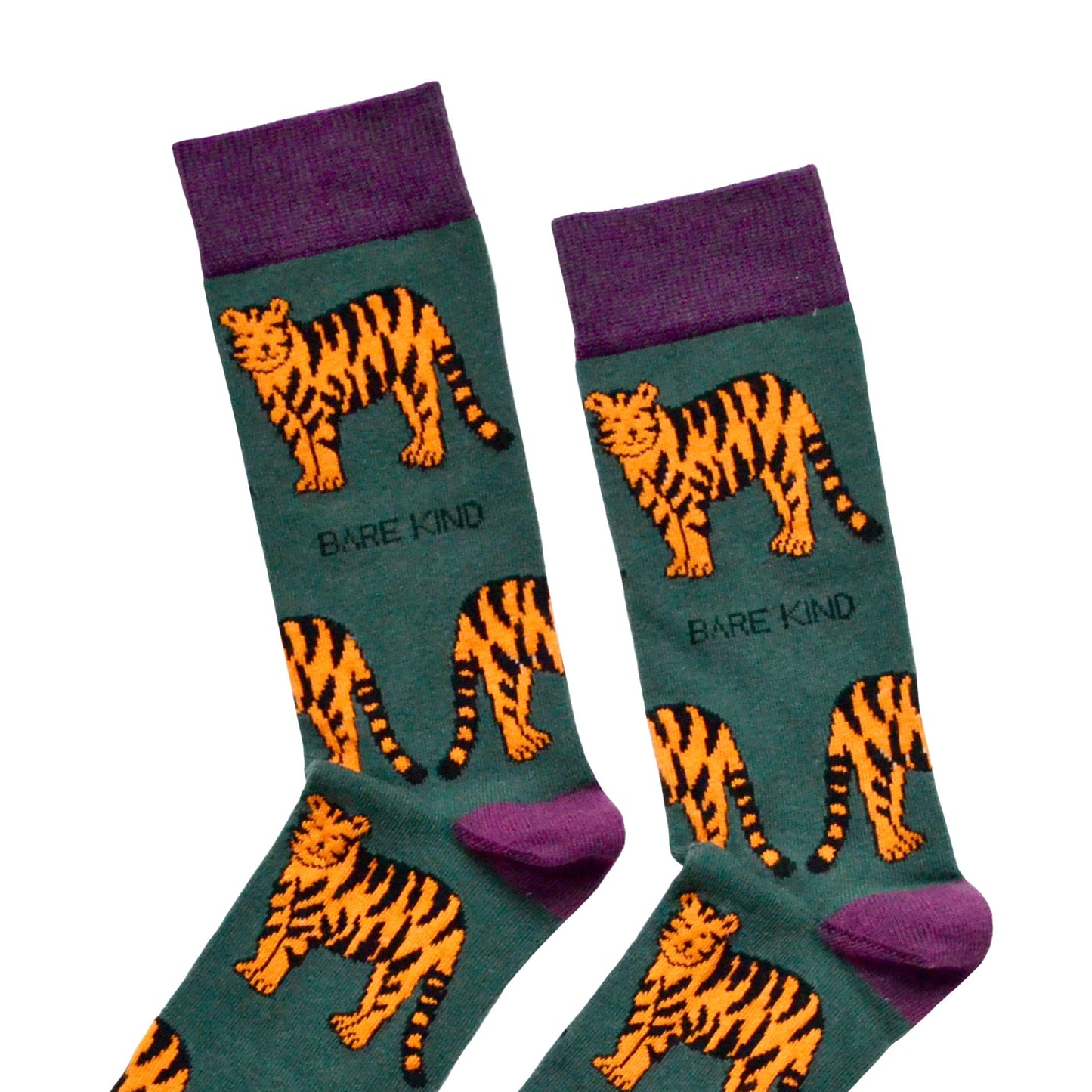
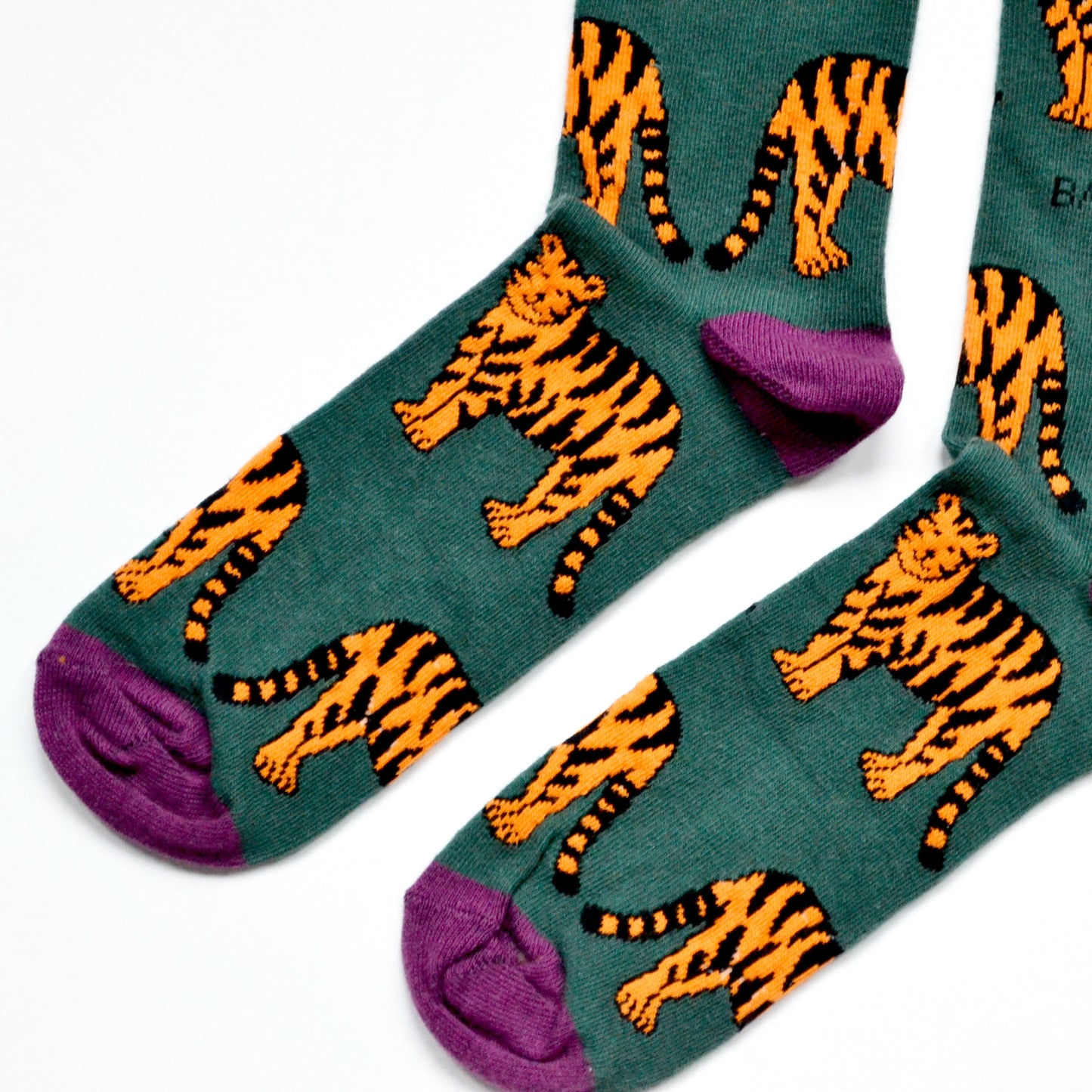
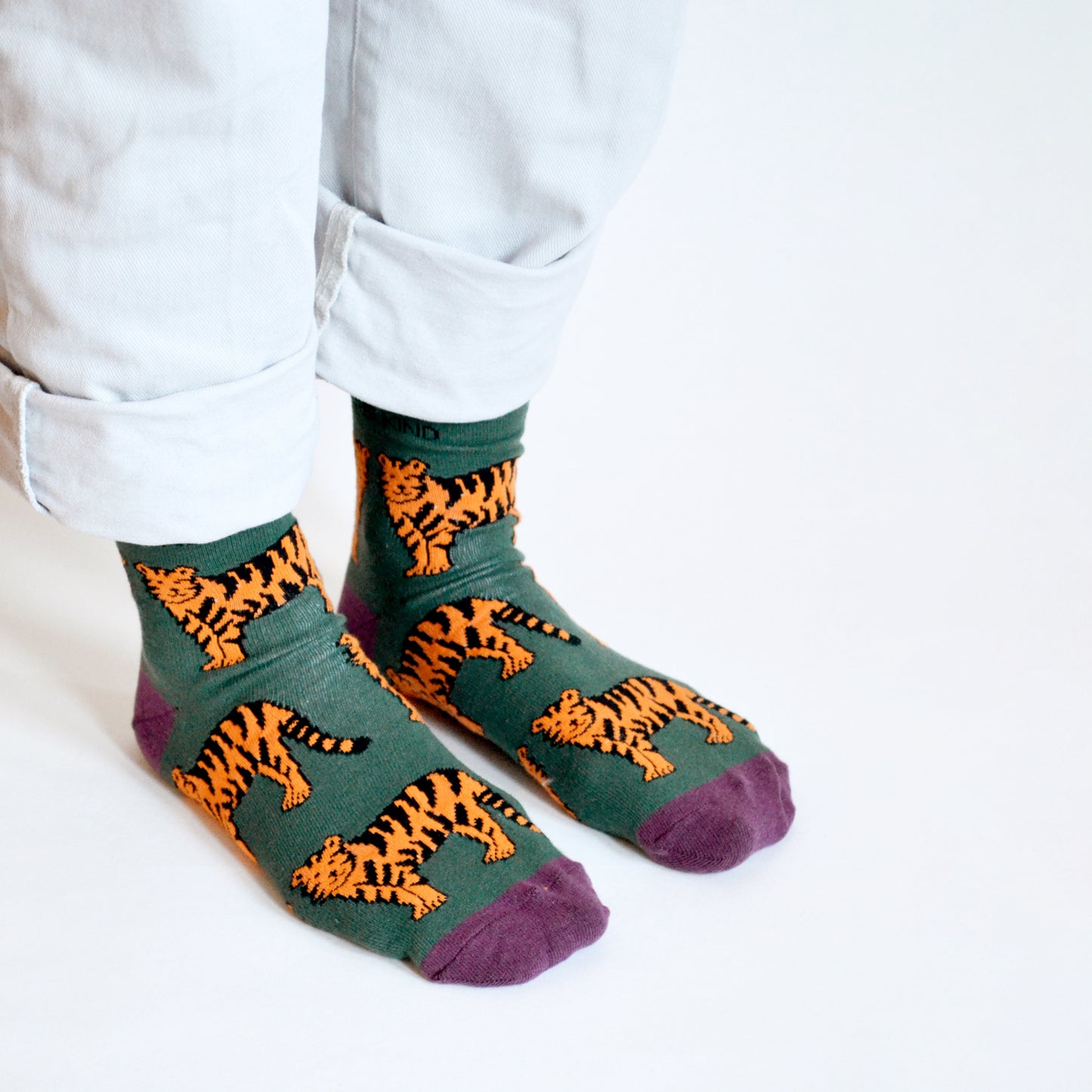
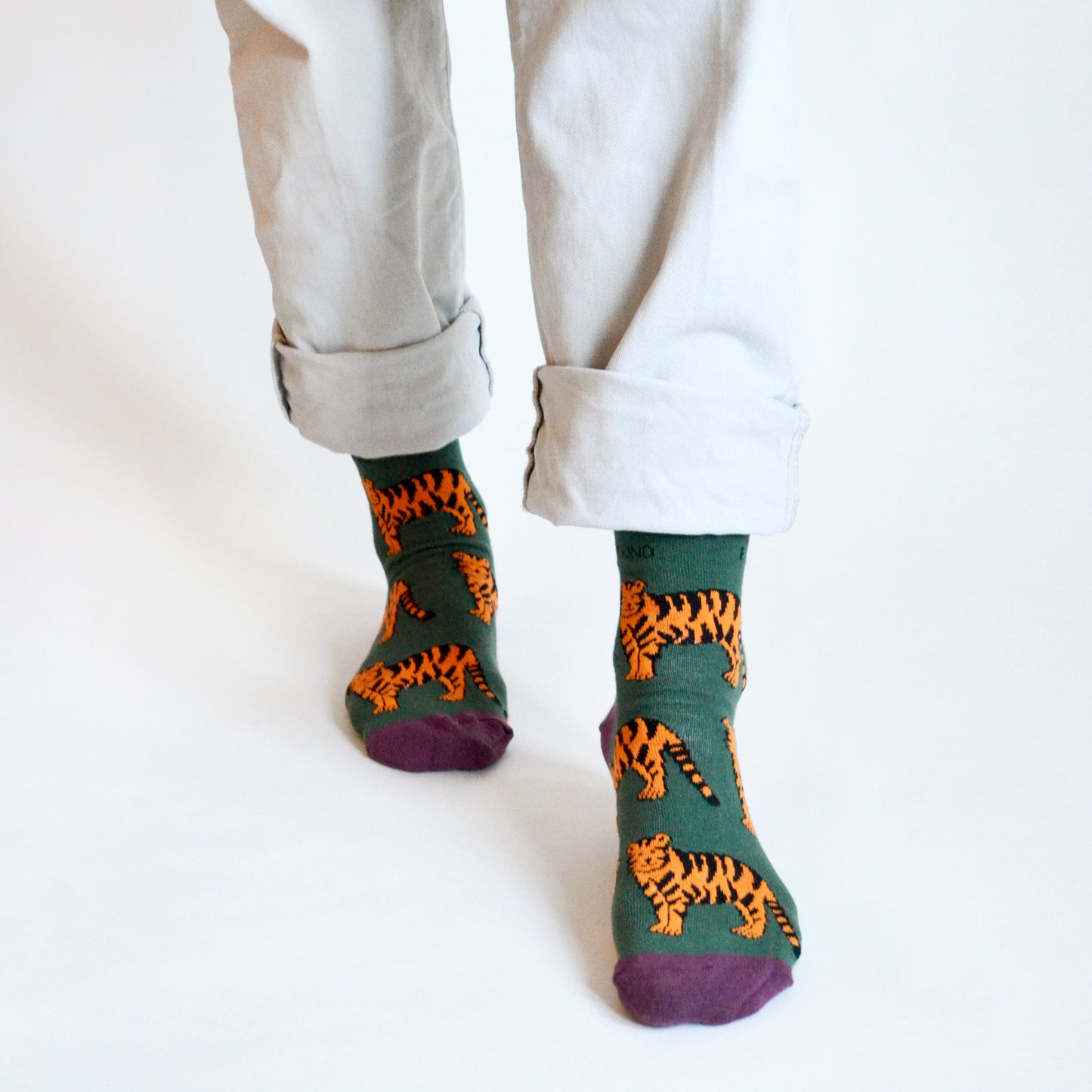
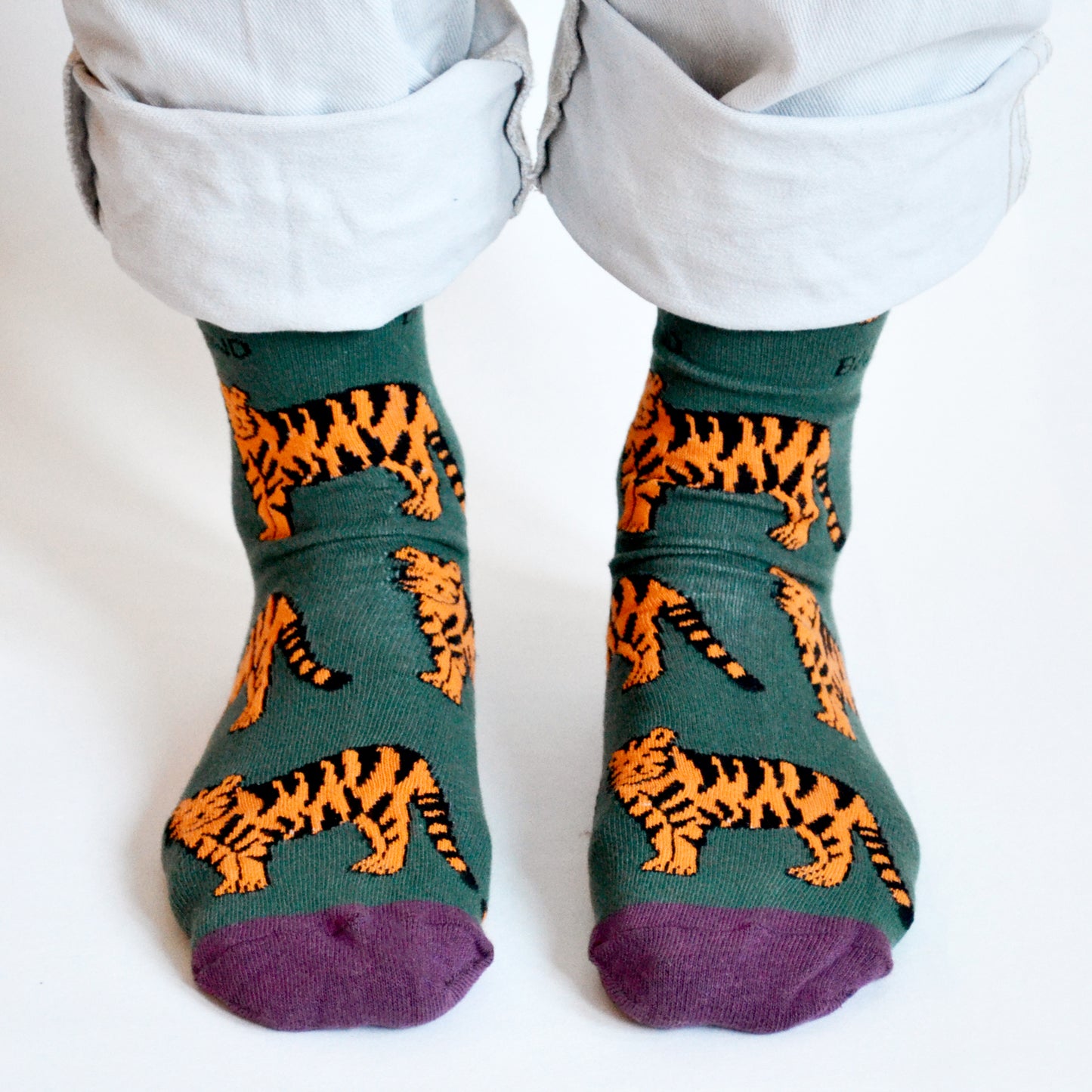
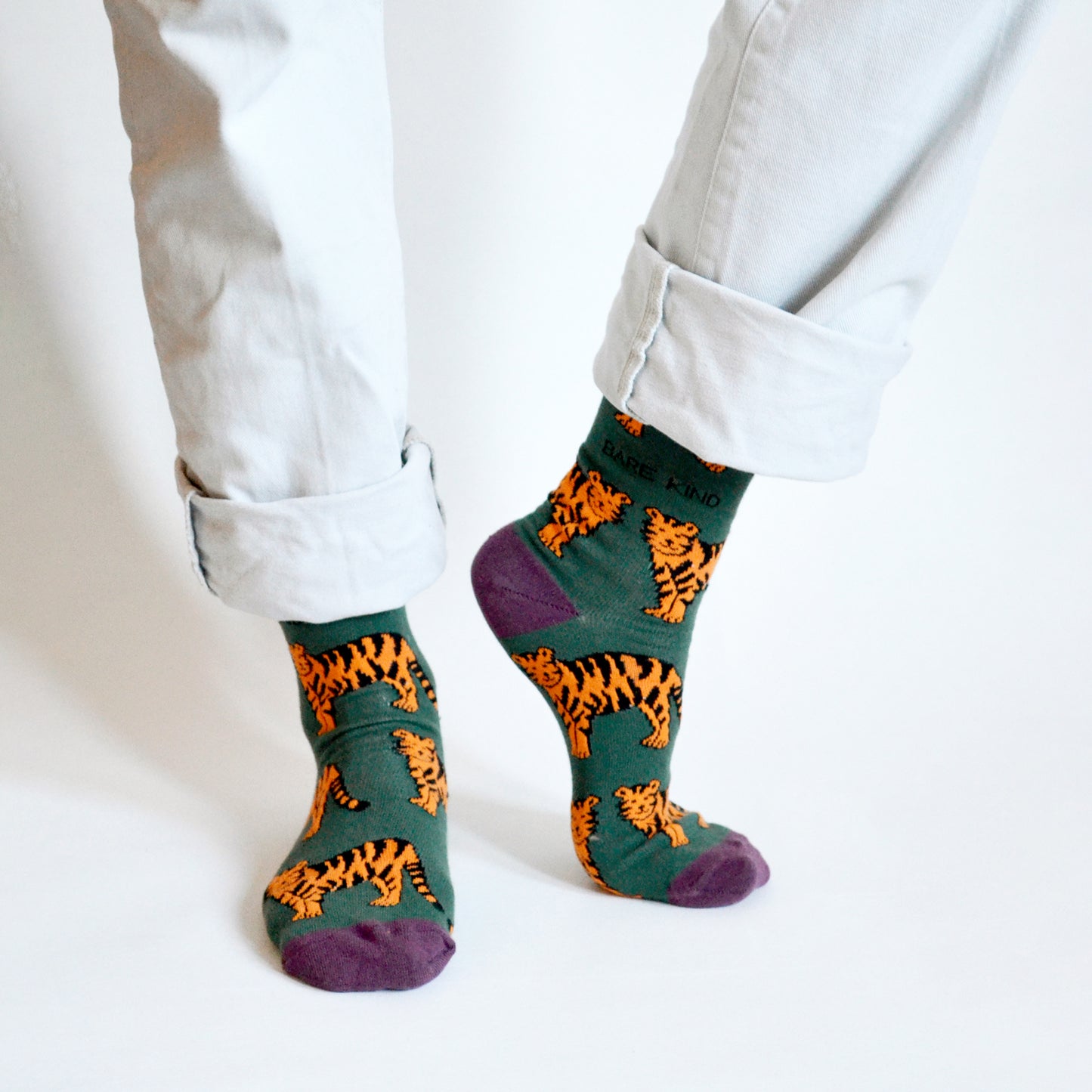
Bare Kind
Save the Lemurs Bamboo Socks
Share
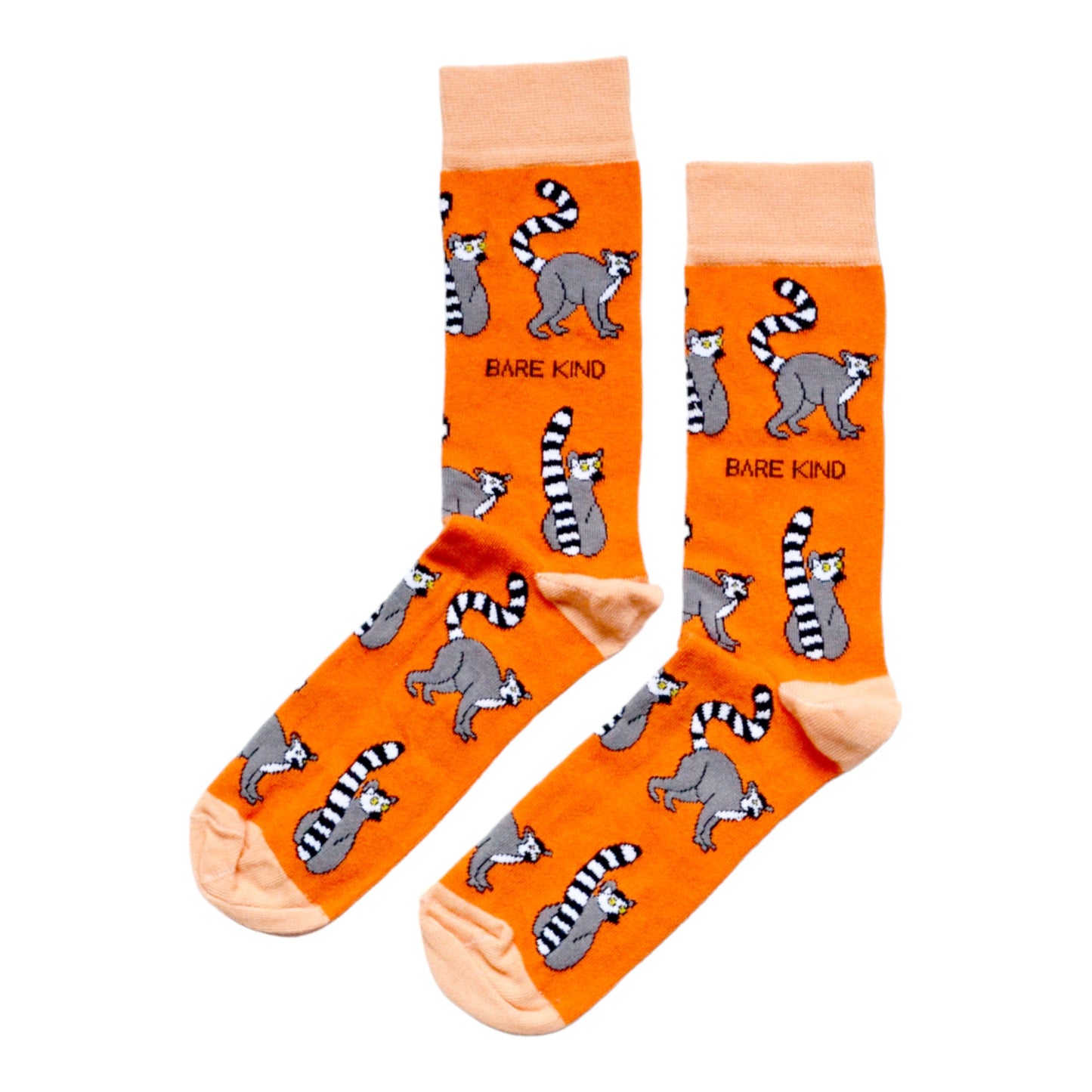
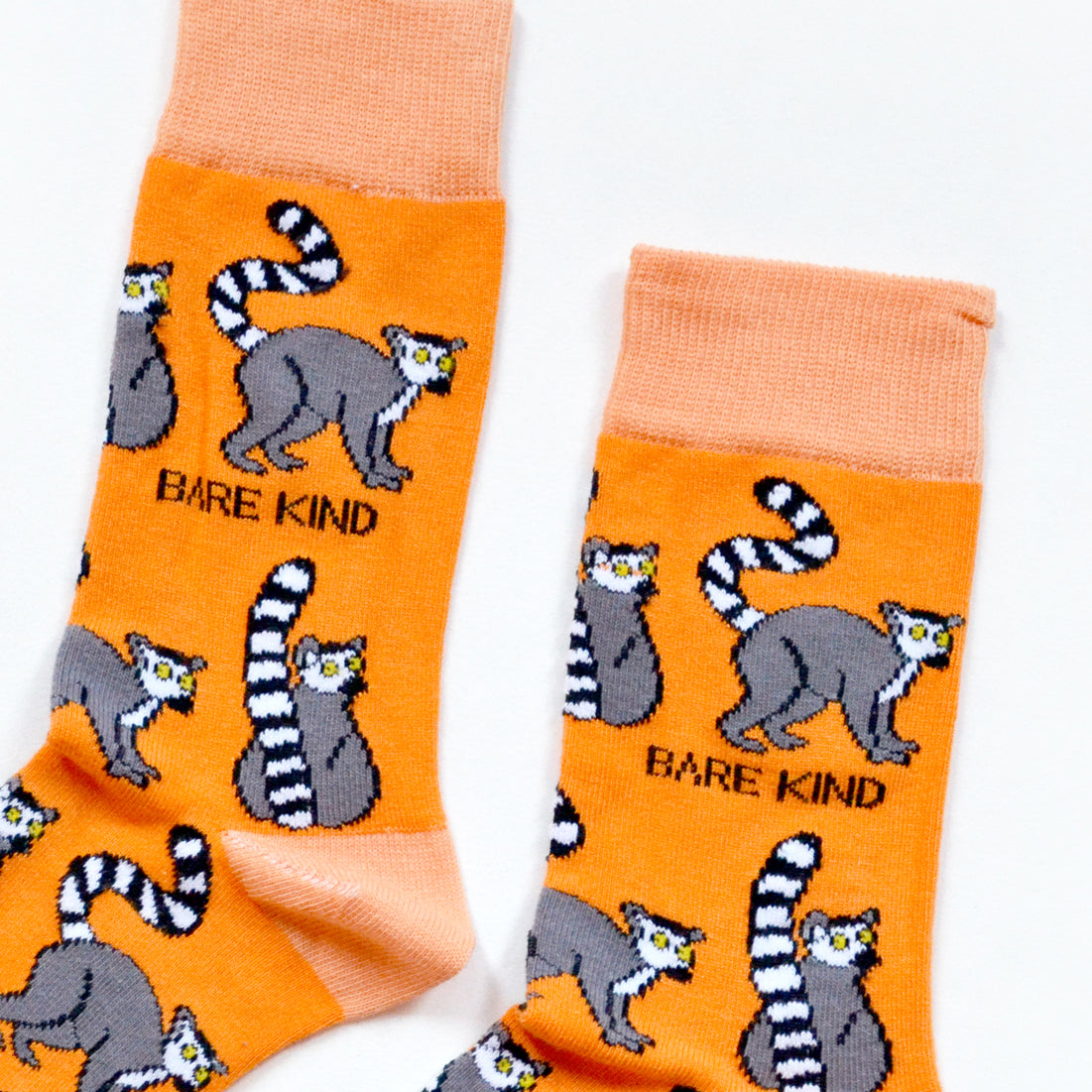
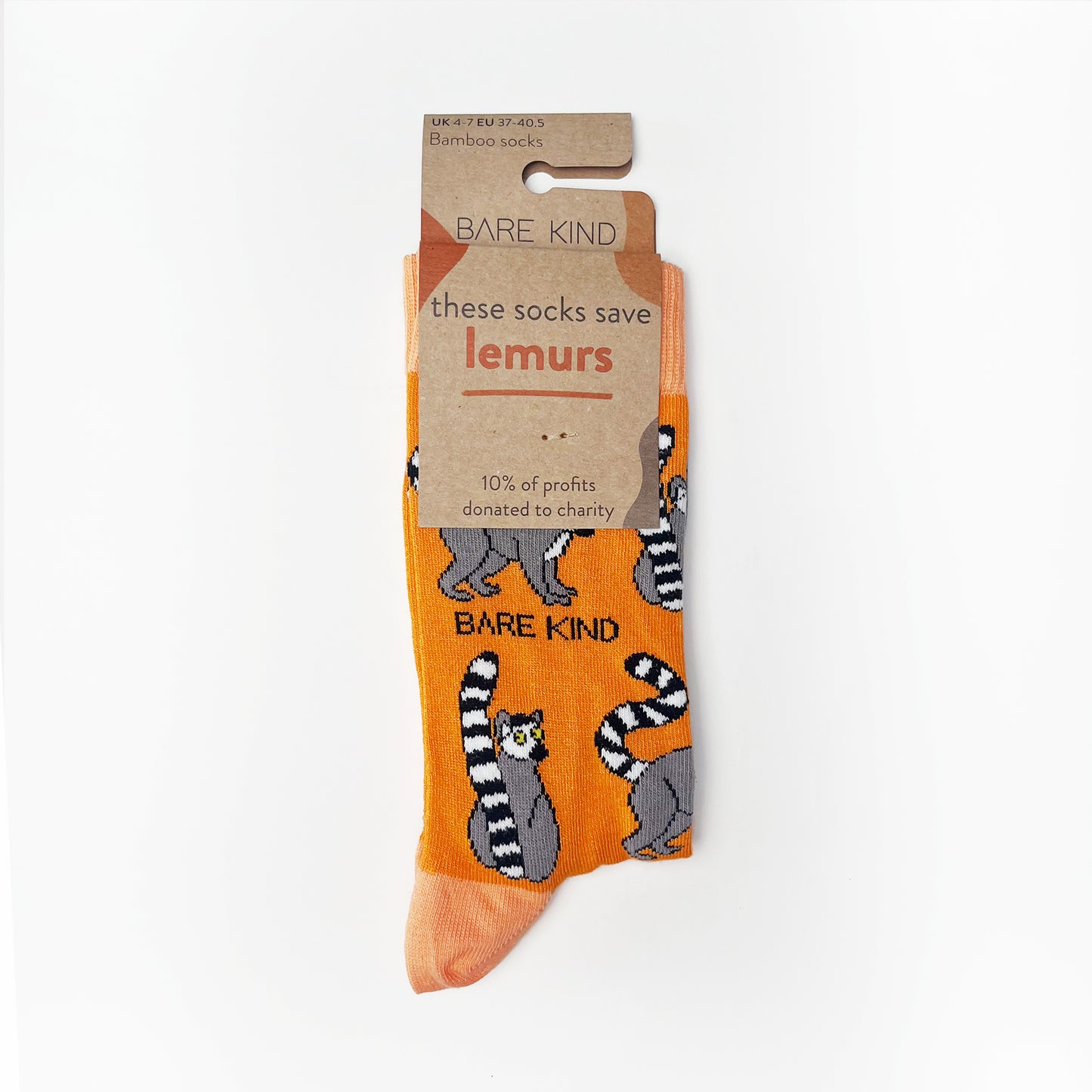
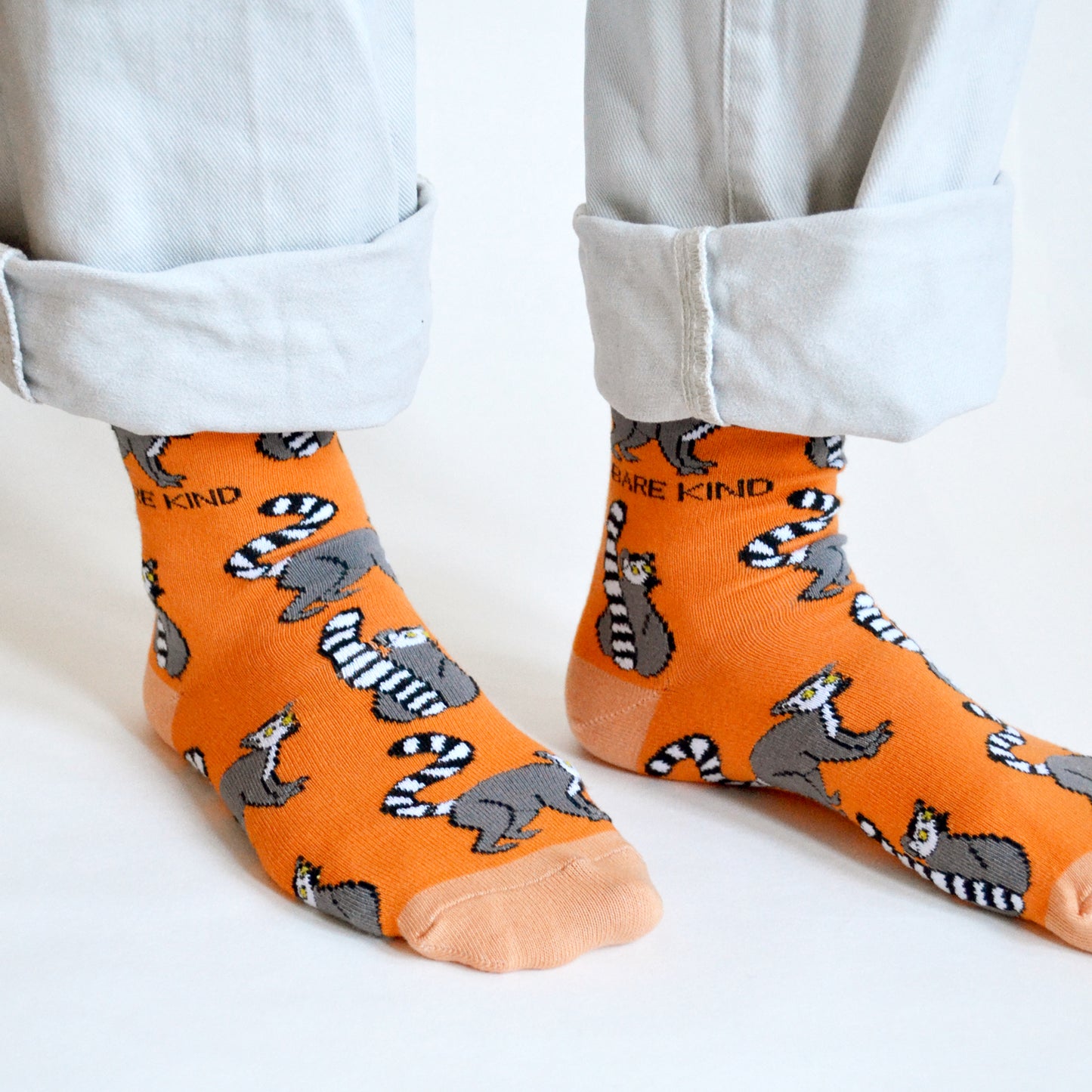
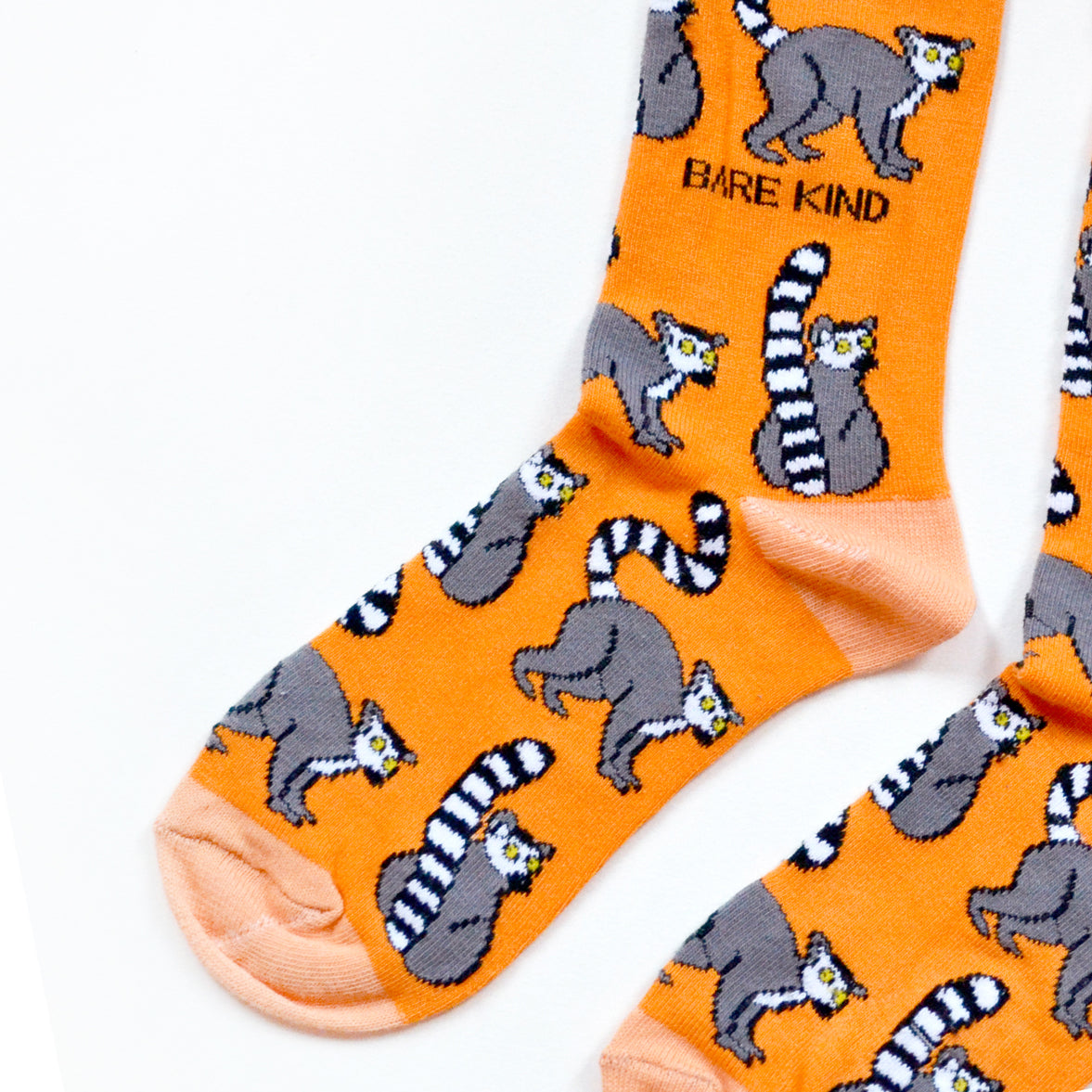
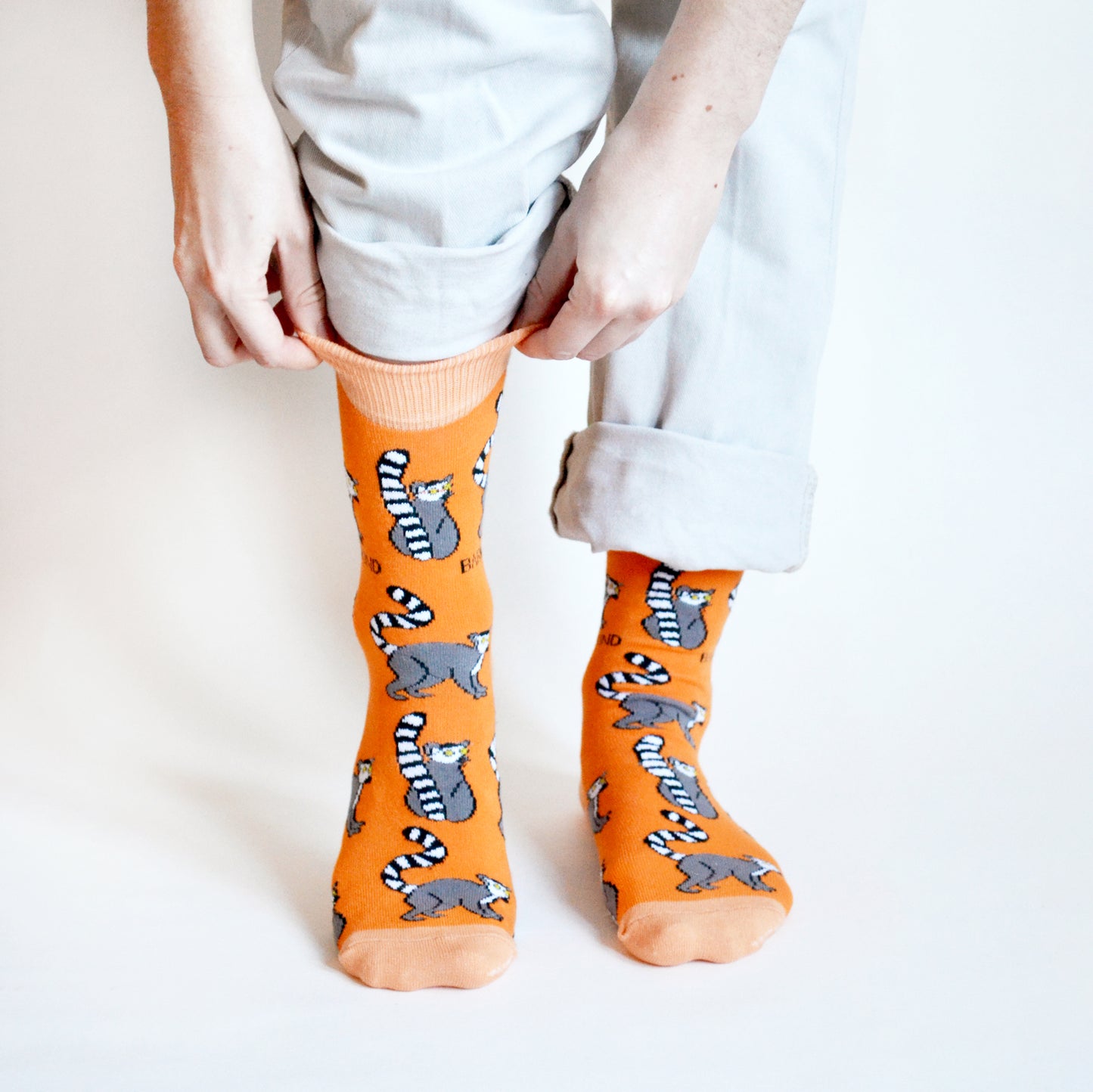
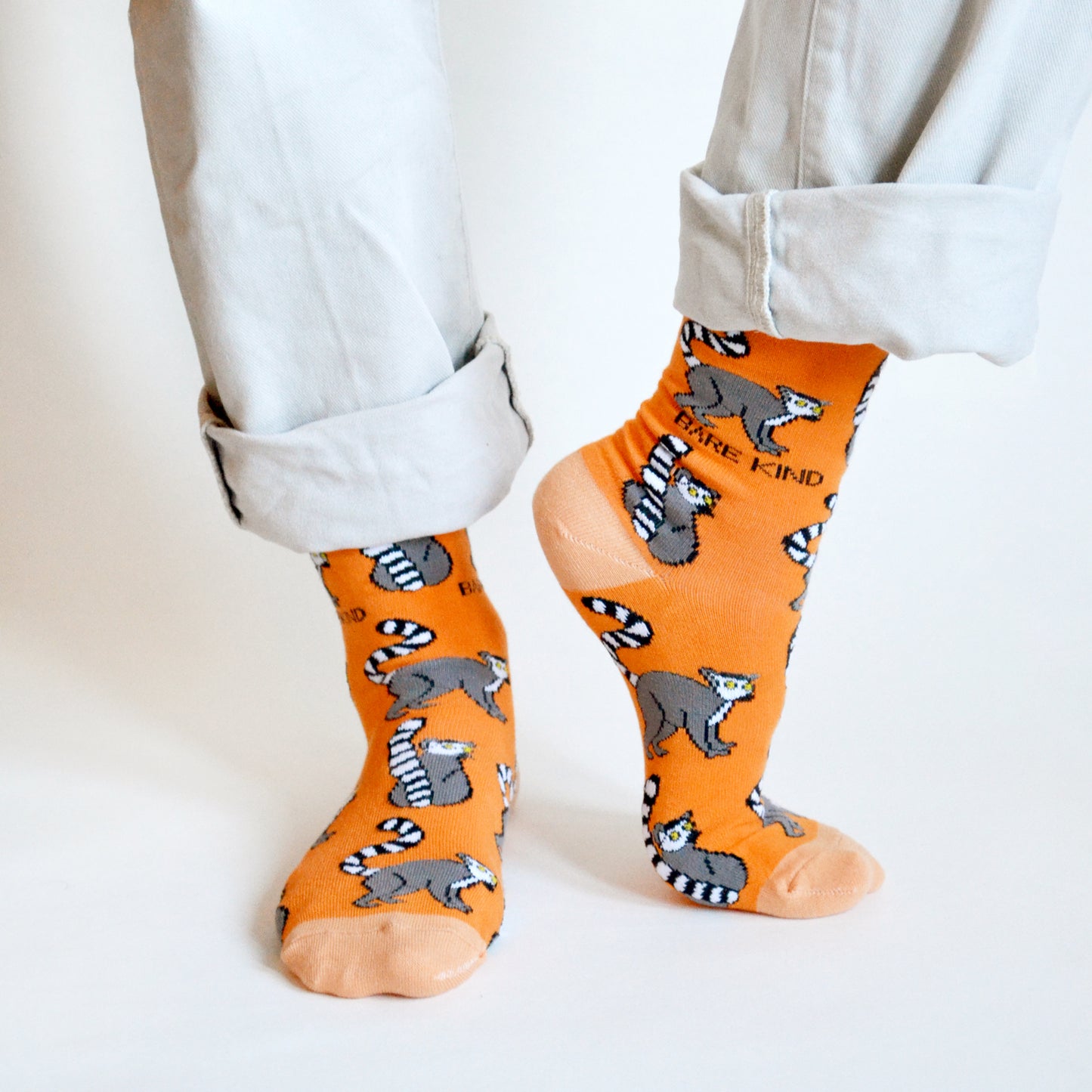
Bare Kind
Save the Gorillas Bamboo Socks
Share
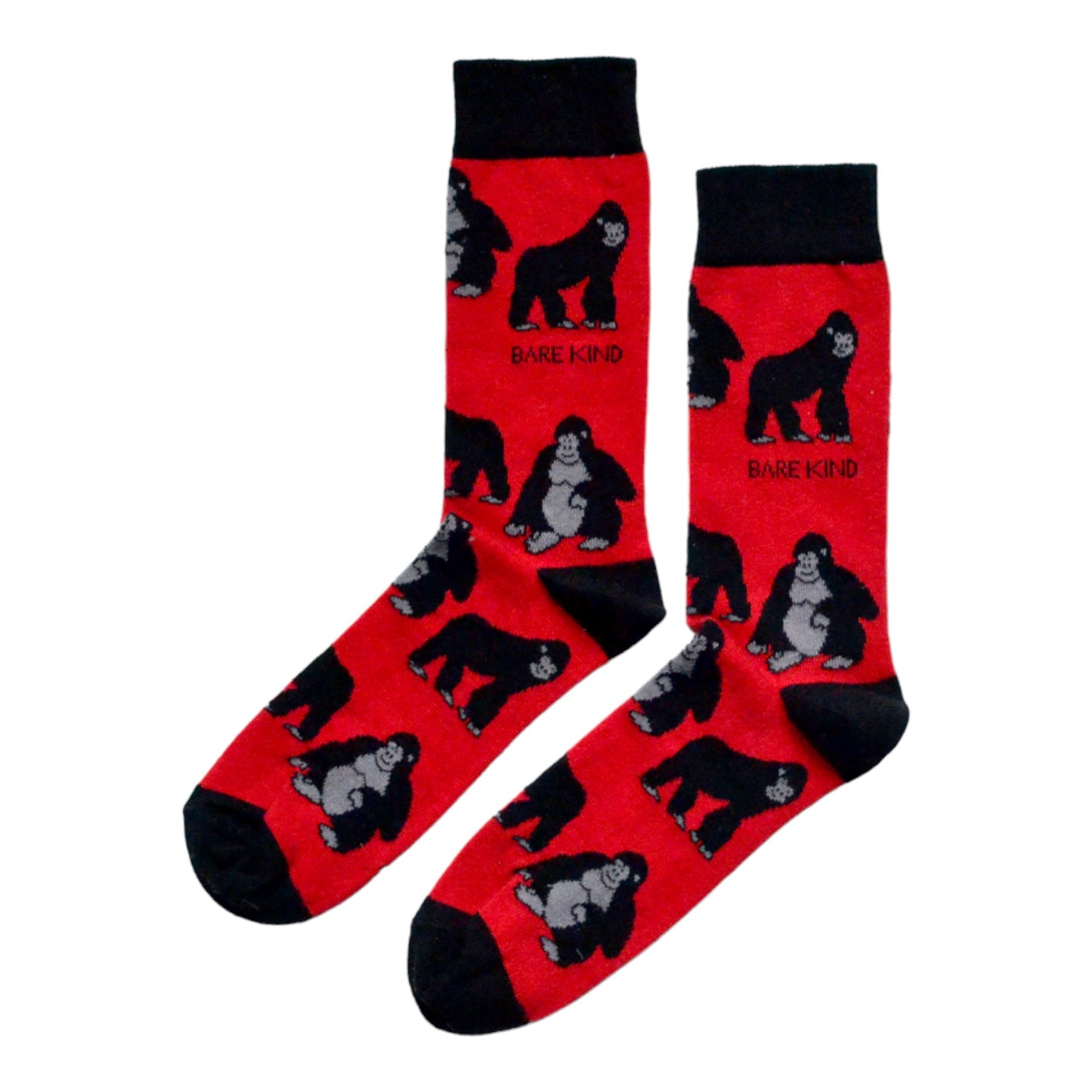
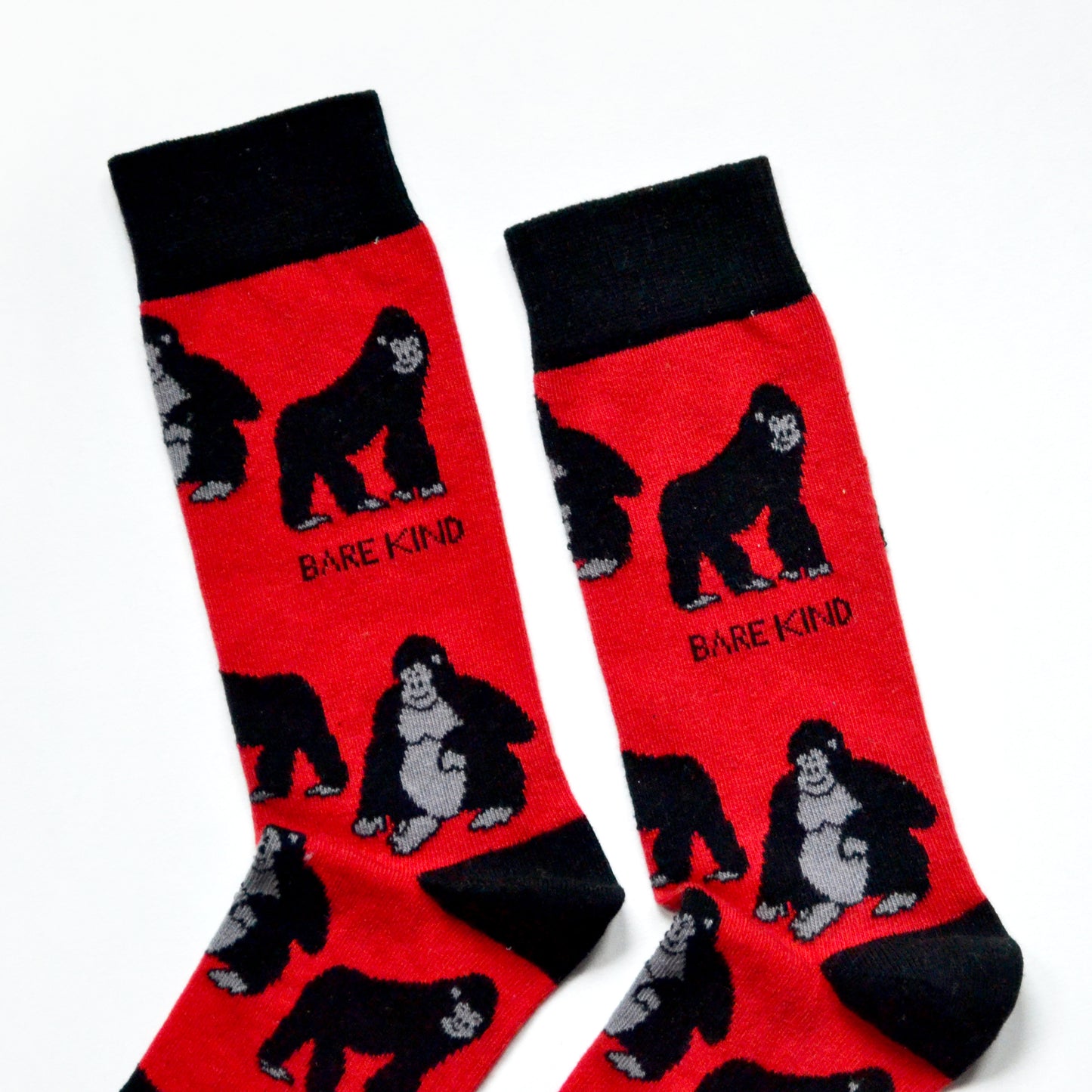
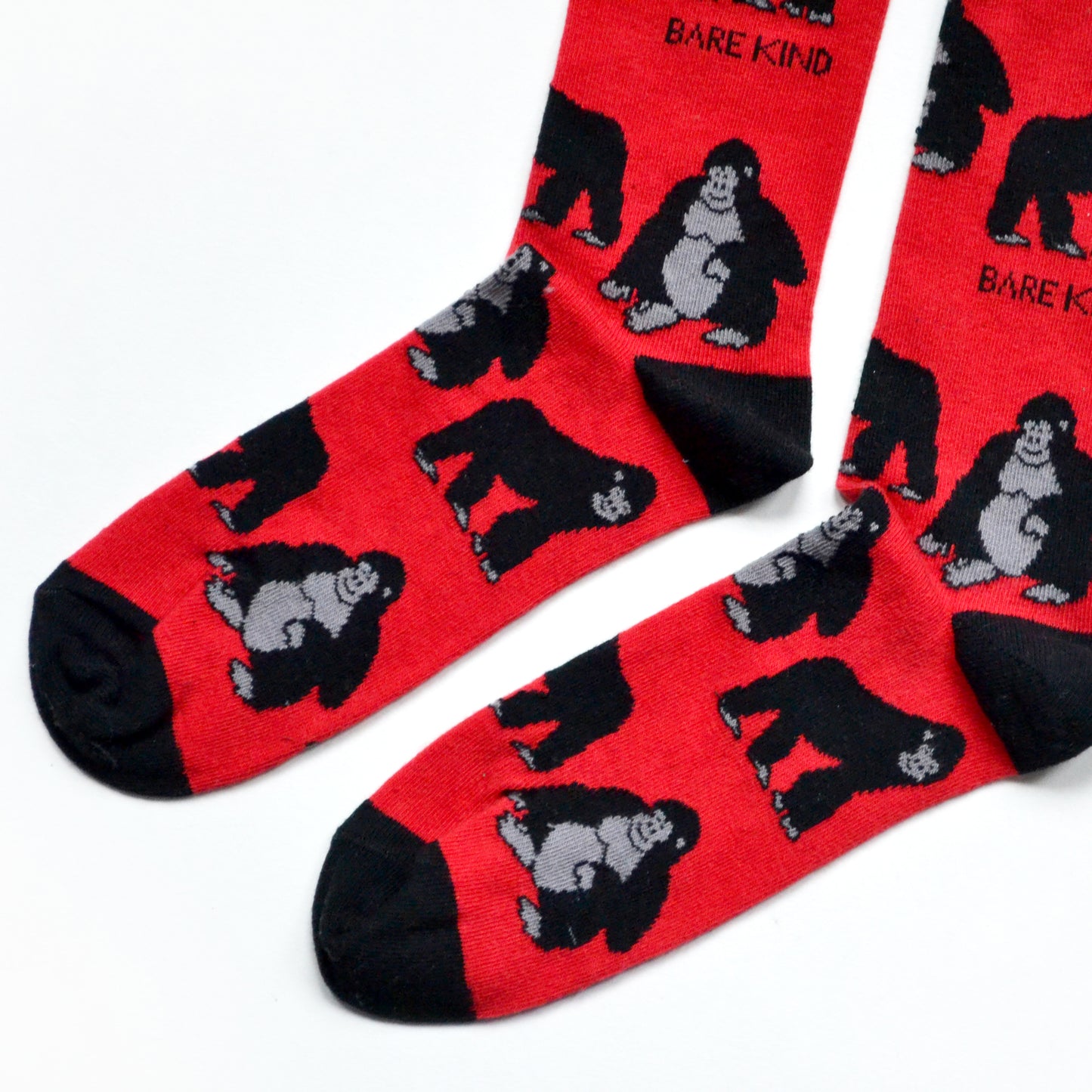
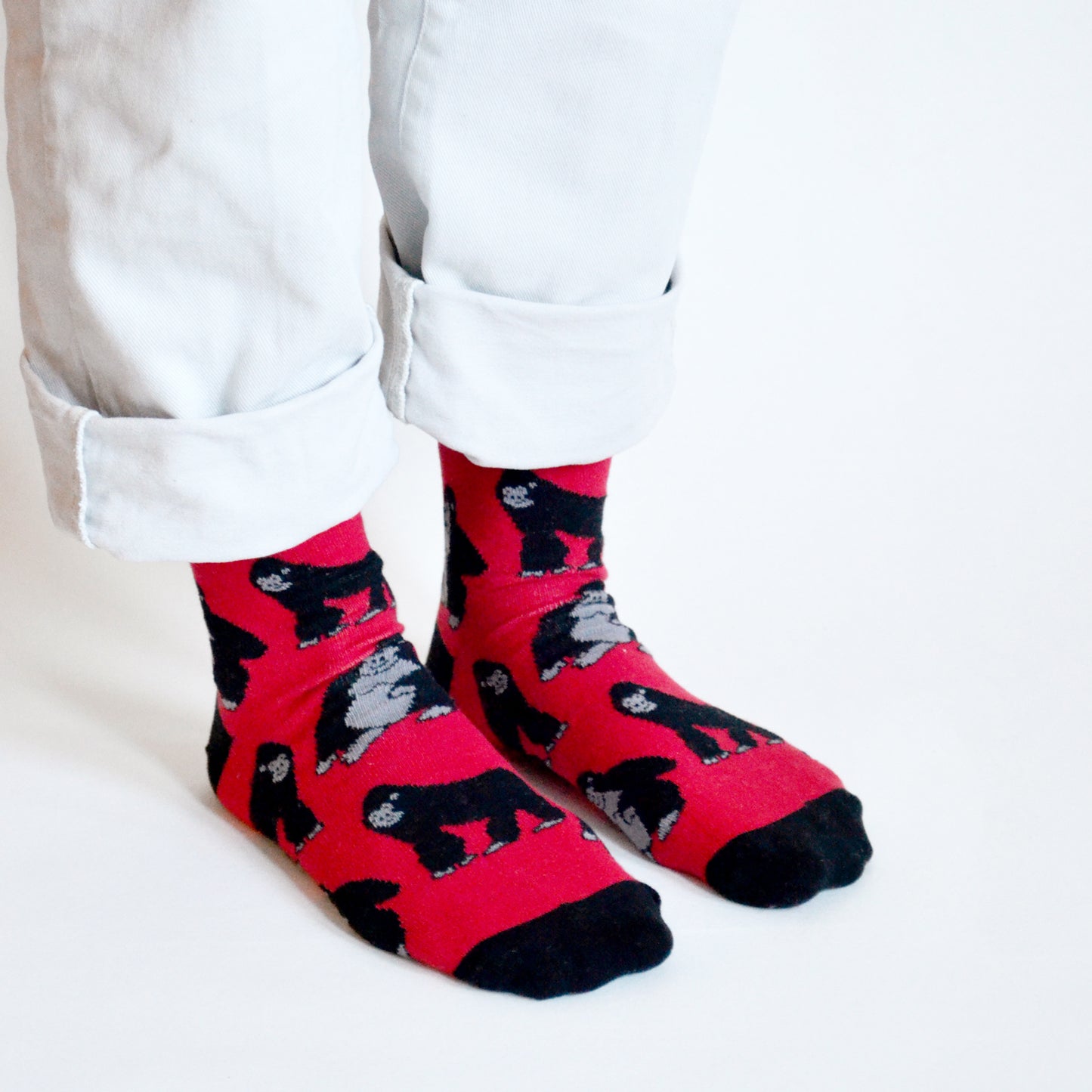
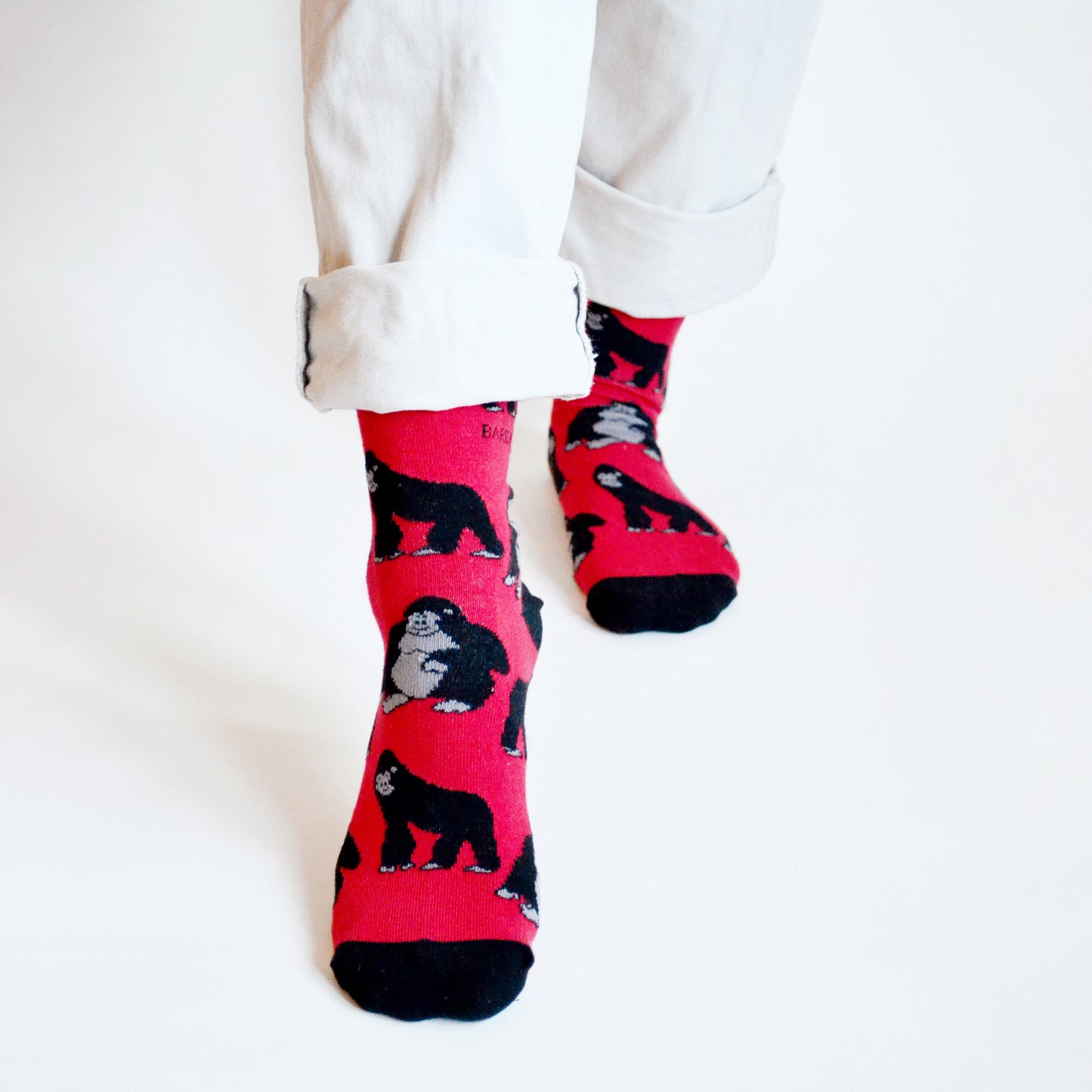
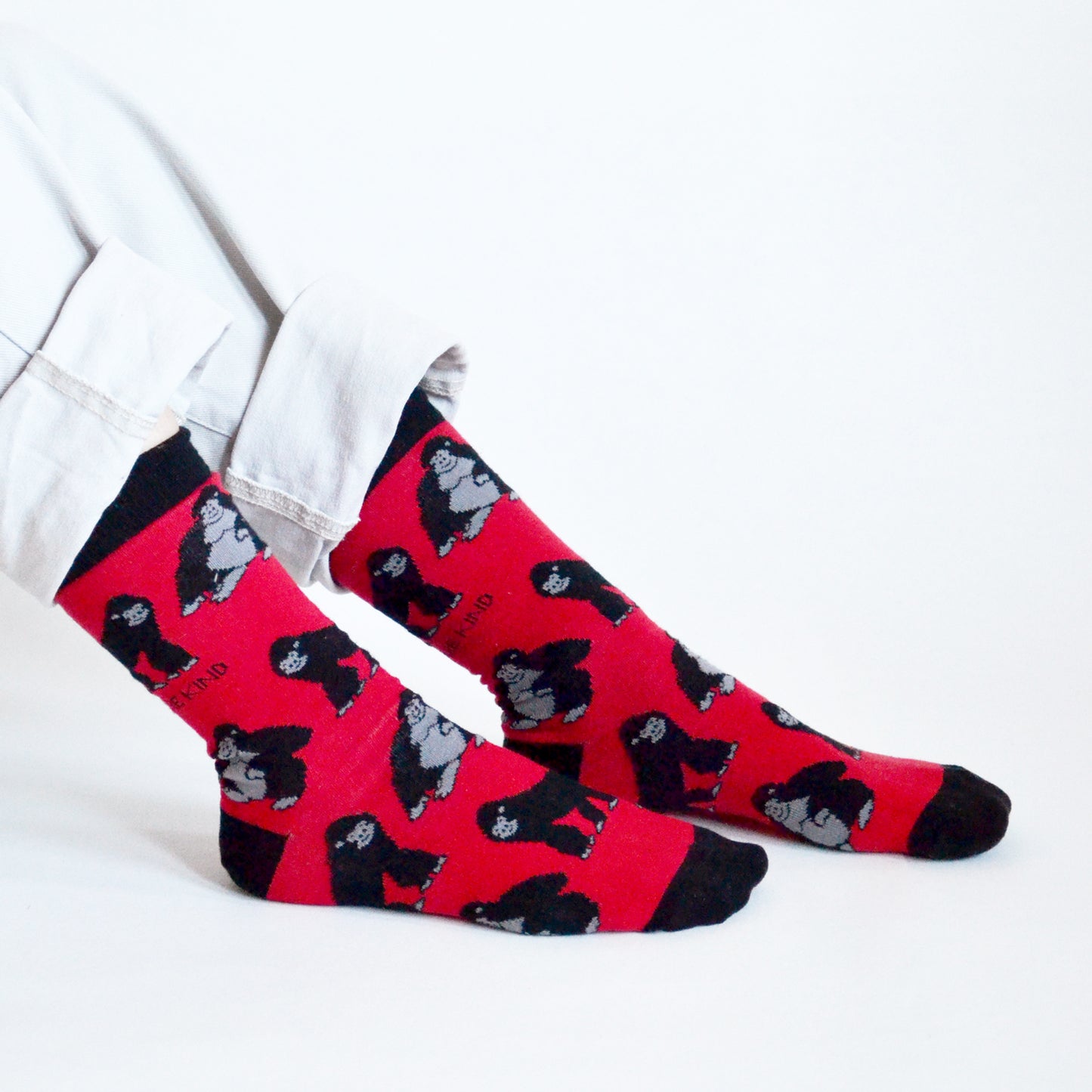
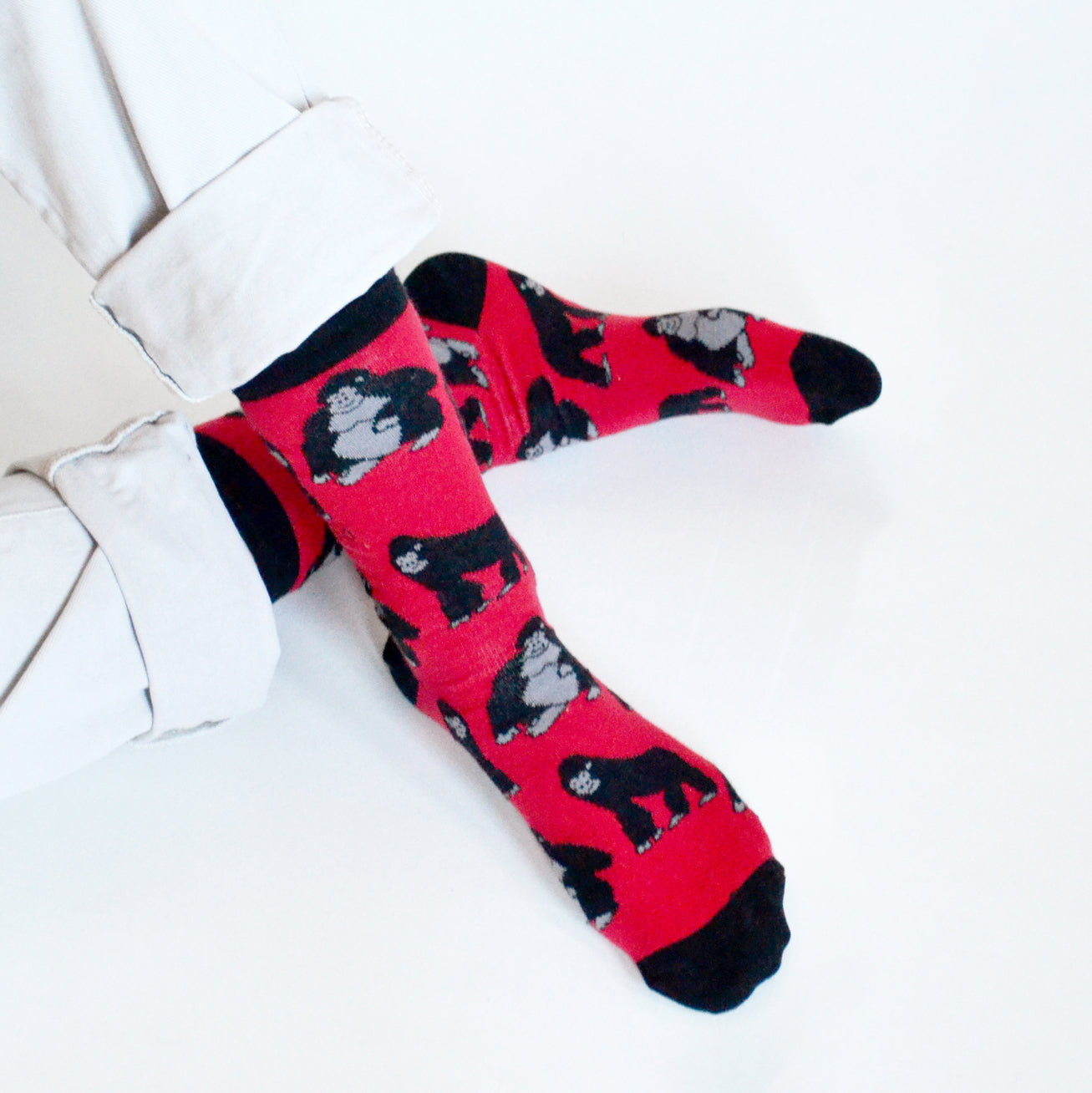
Bare Kind
Save the Frogs Bamboo Socks
Share
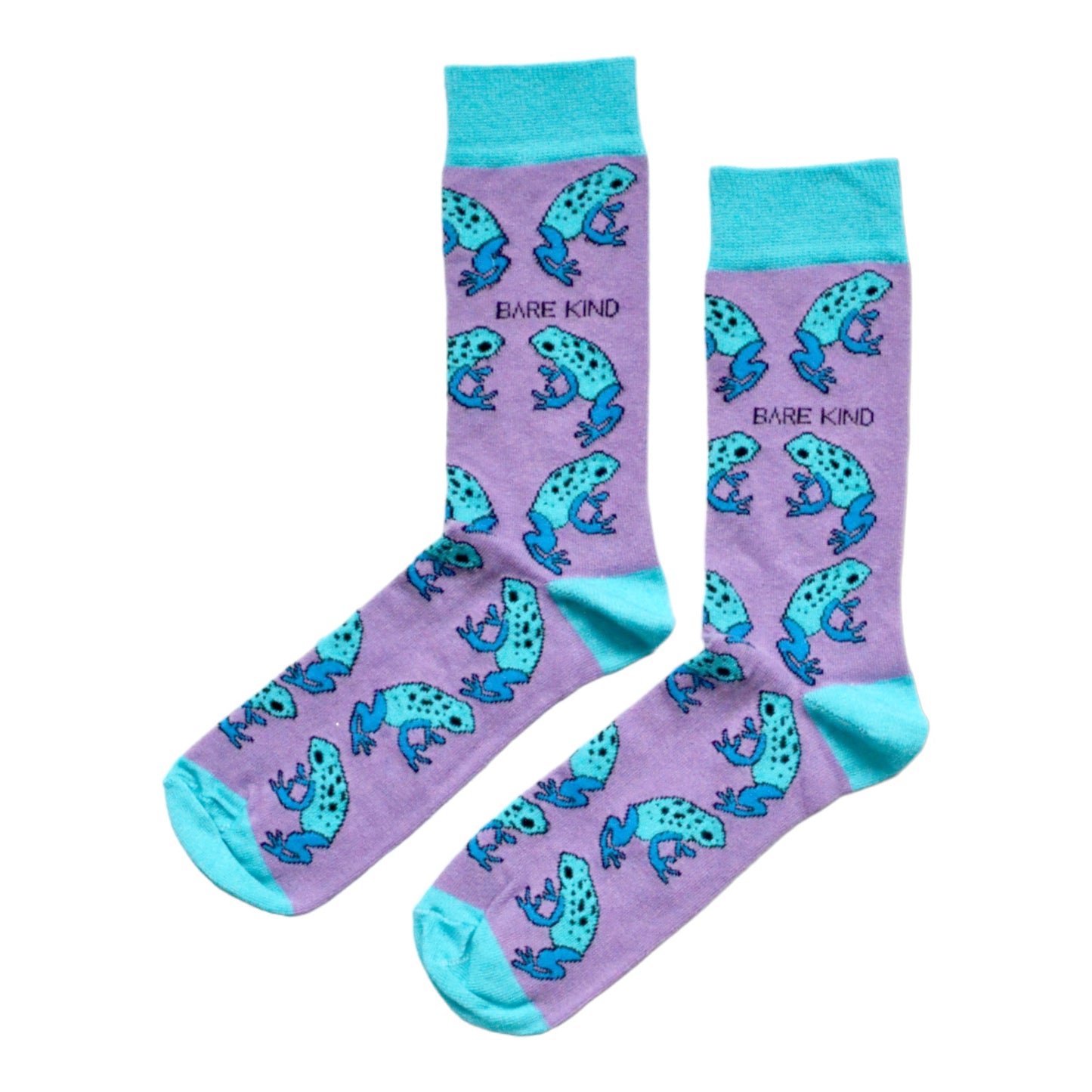
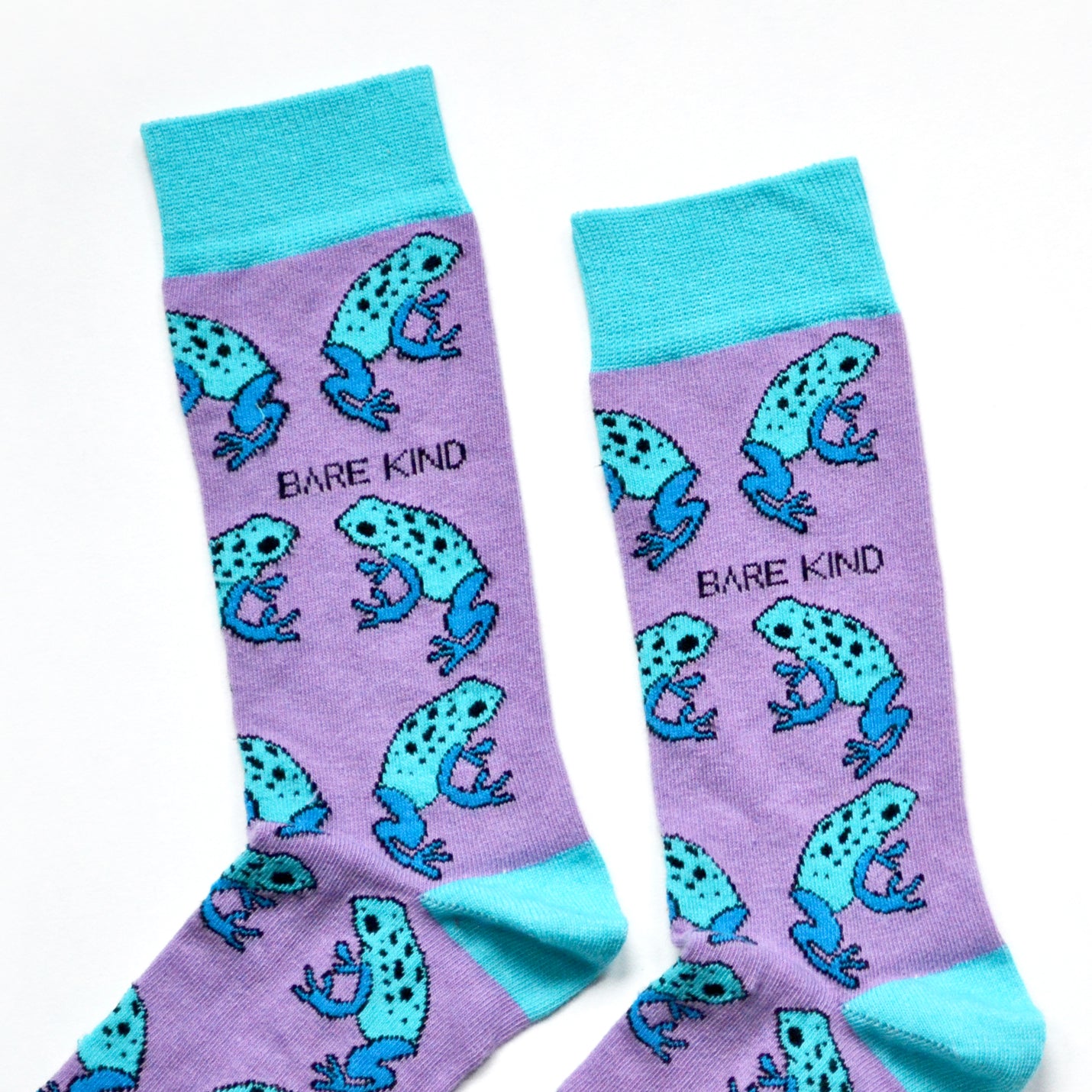
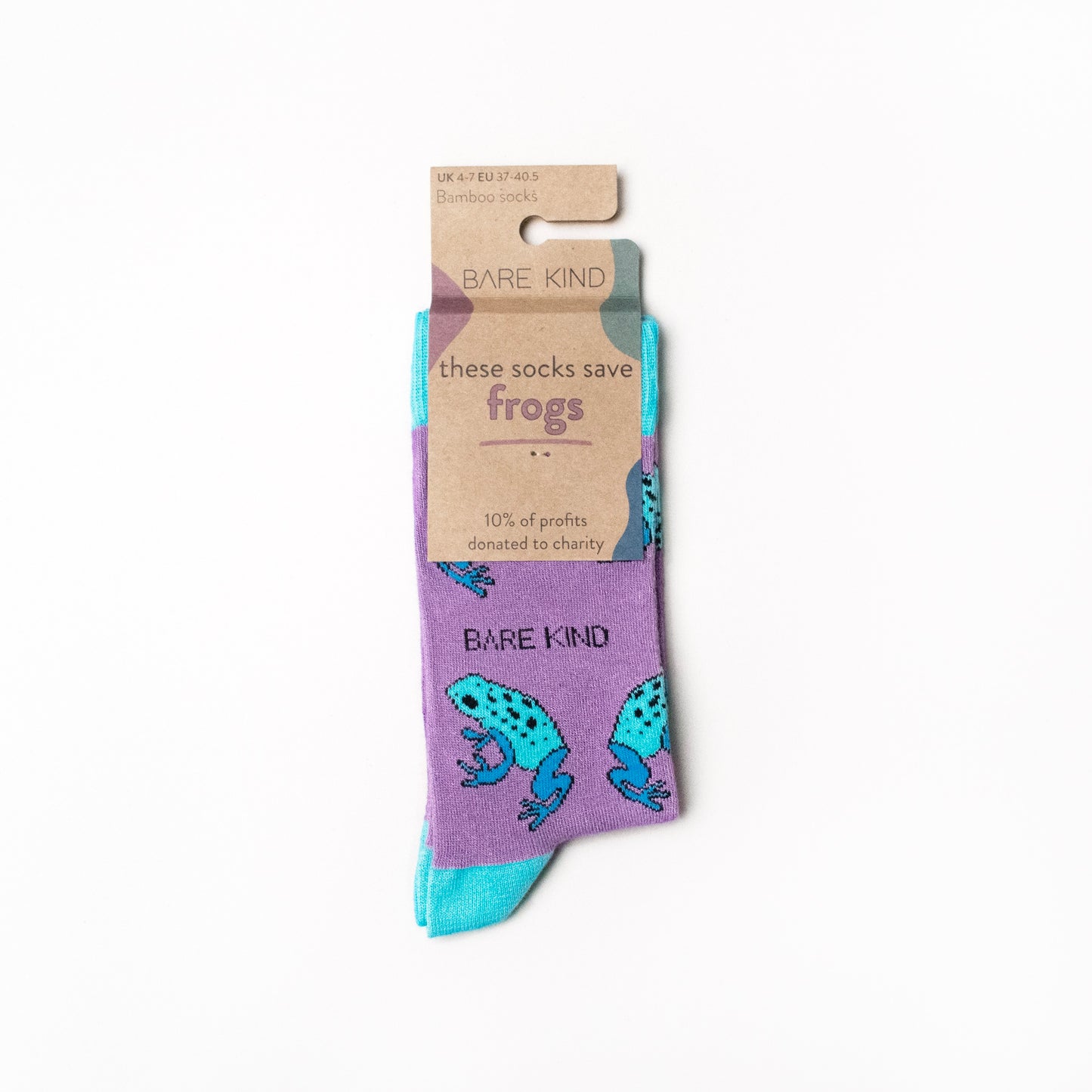
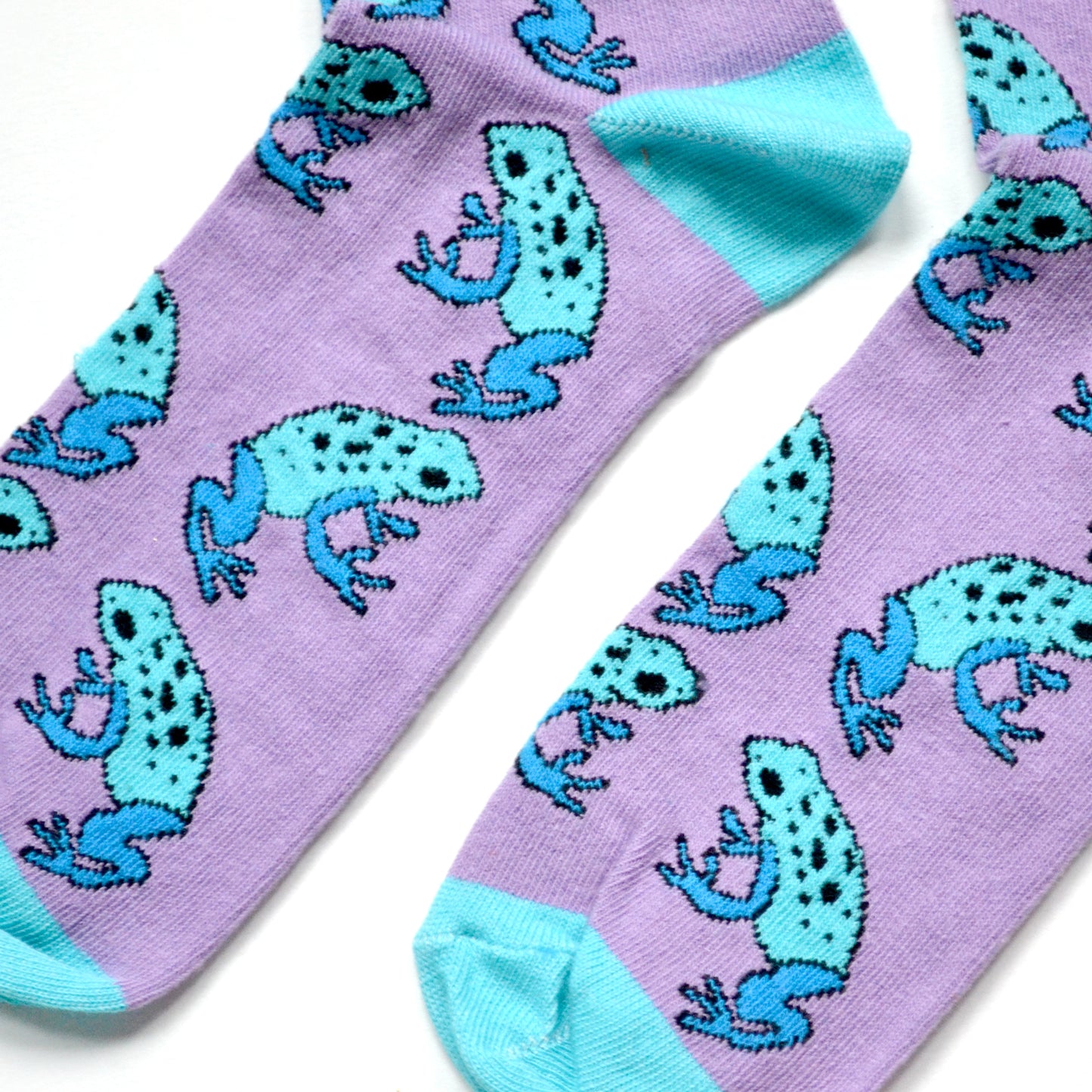
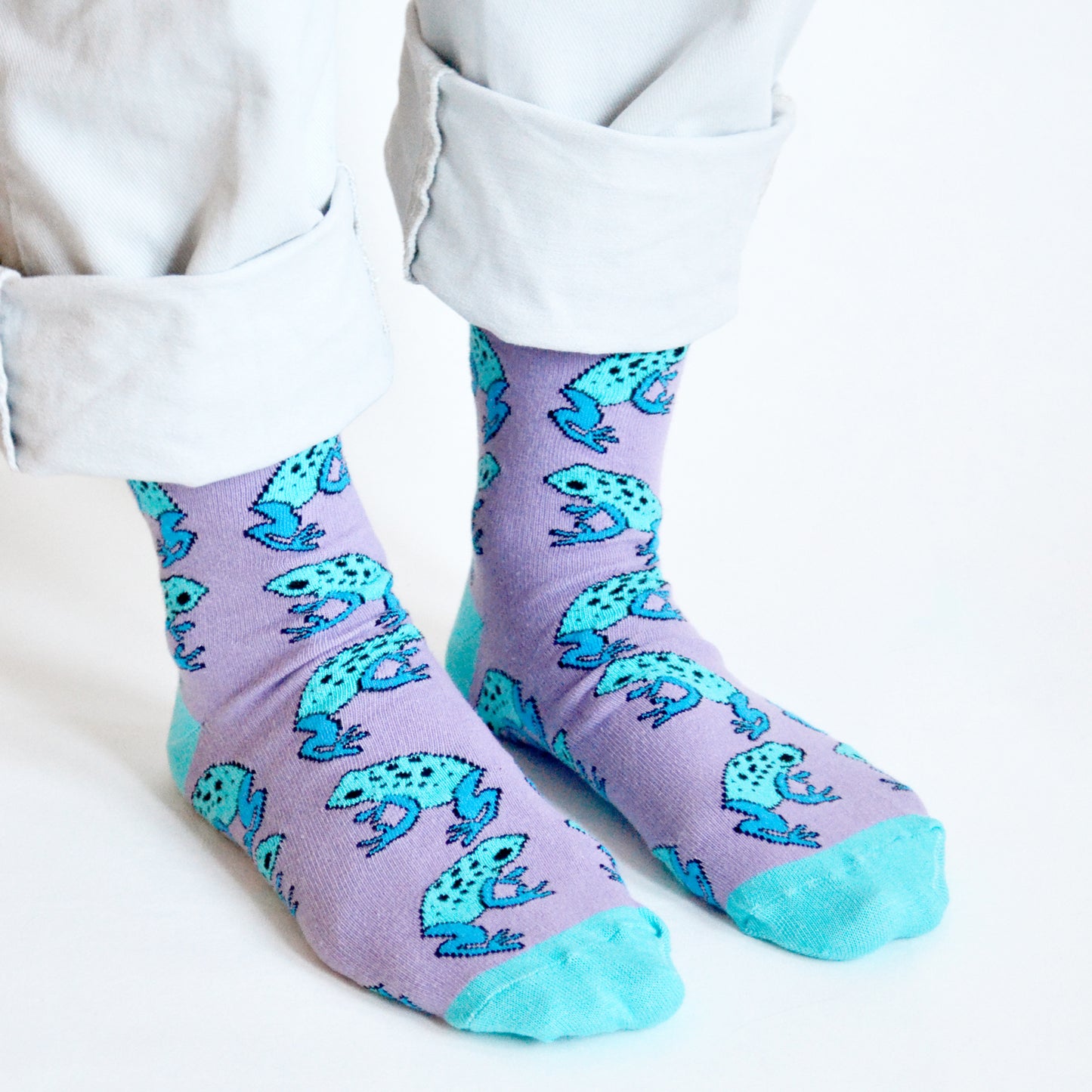
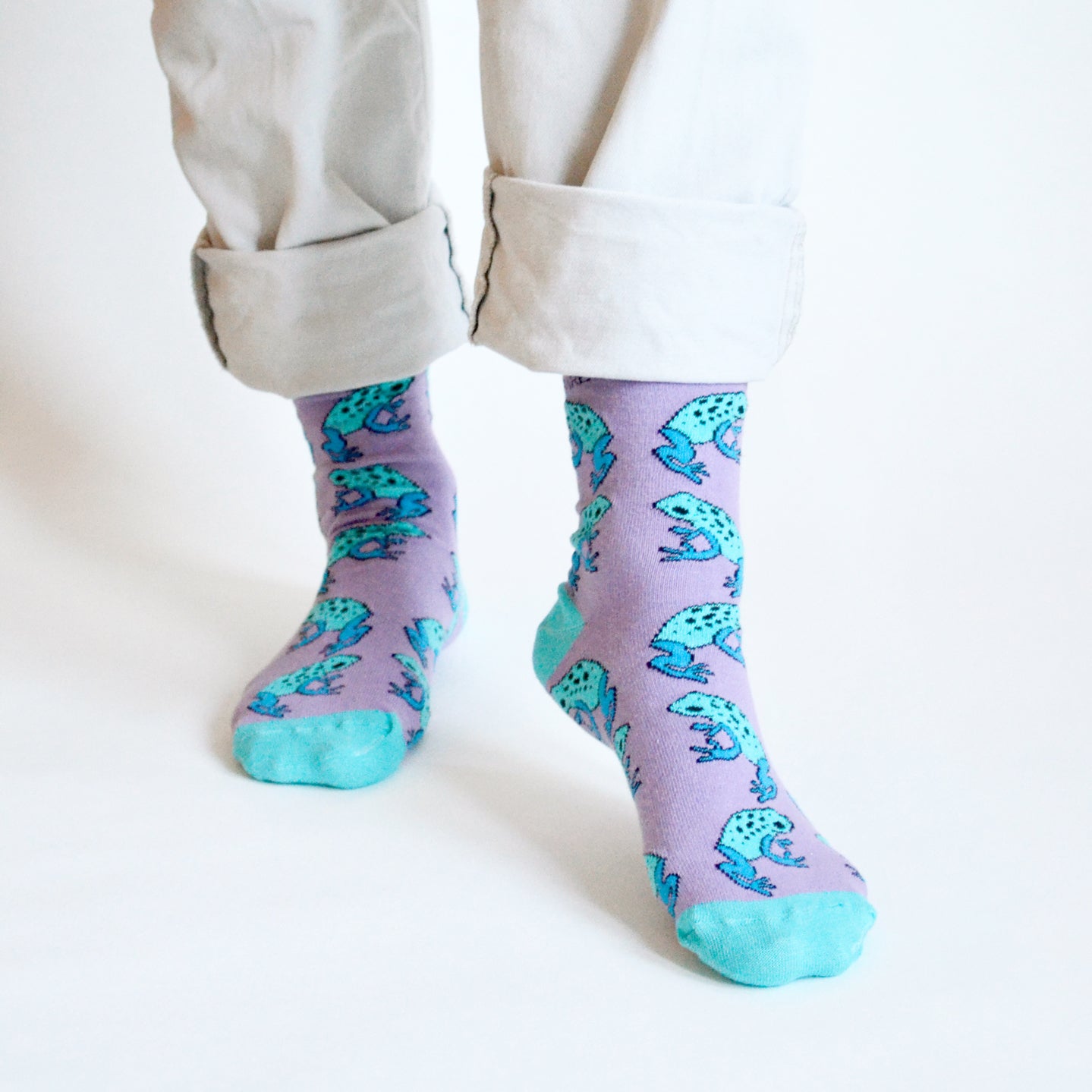
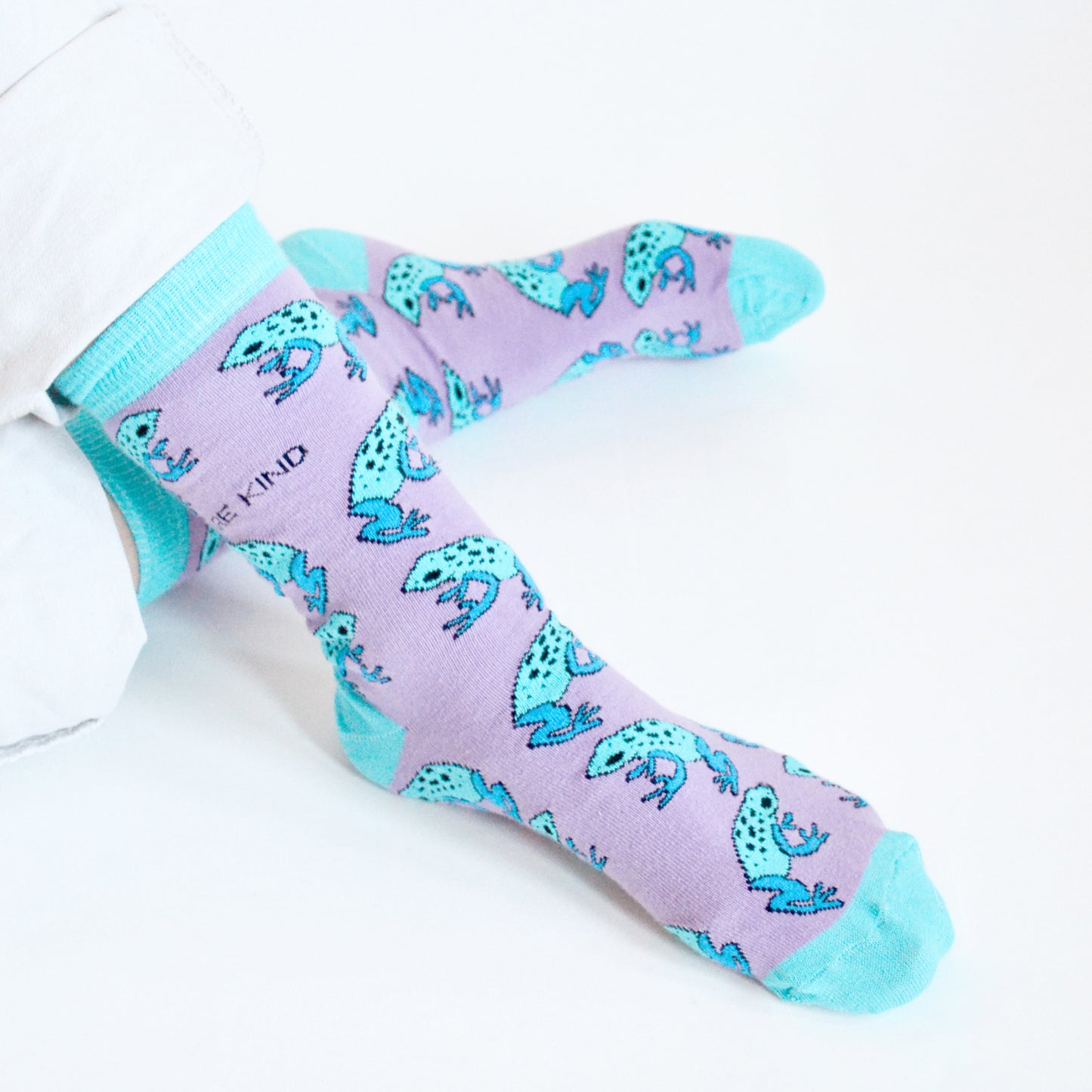
Bare Kind
Save the Tree Frog Bamboo Socks
Share
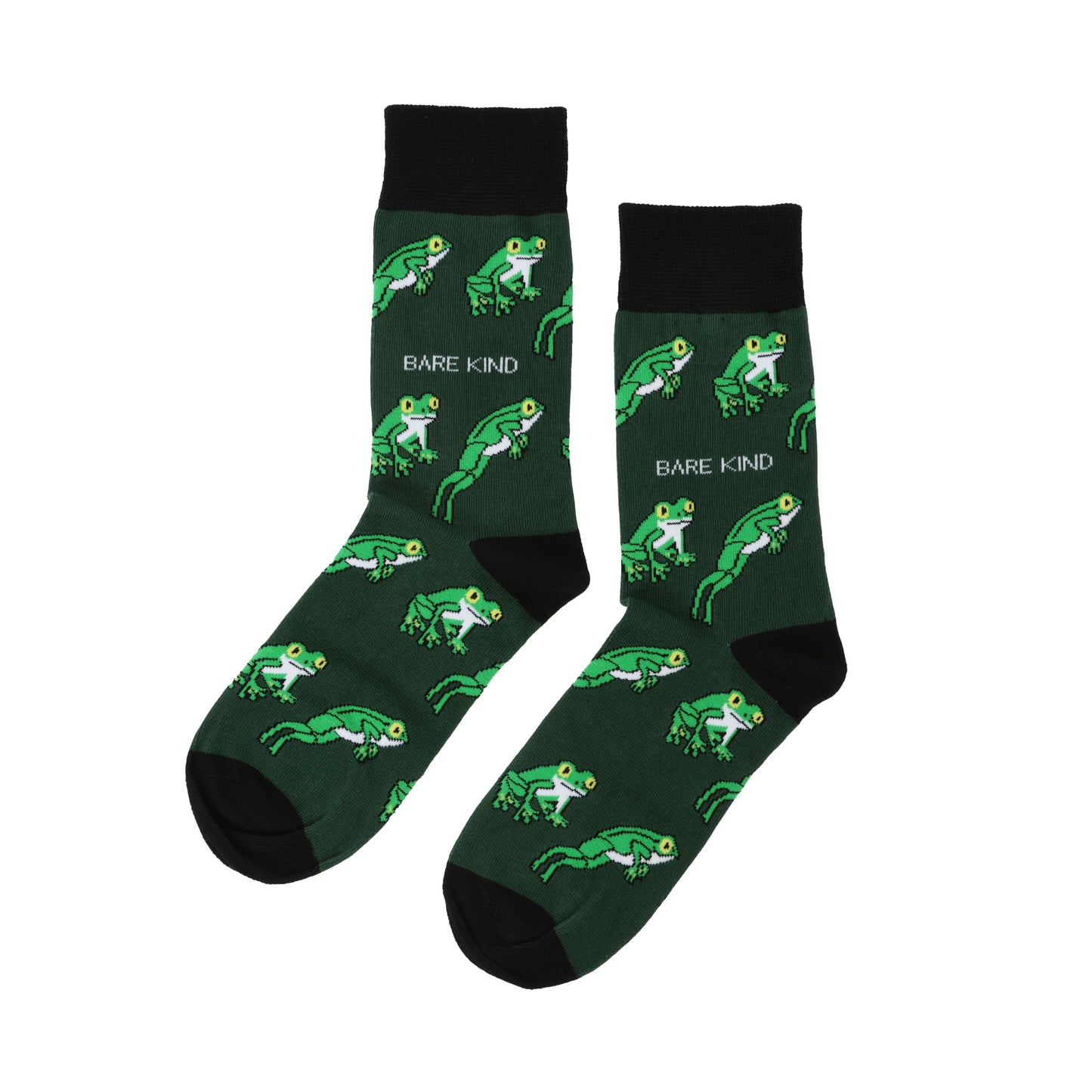
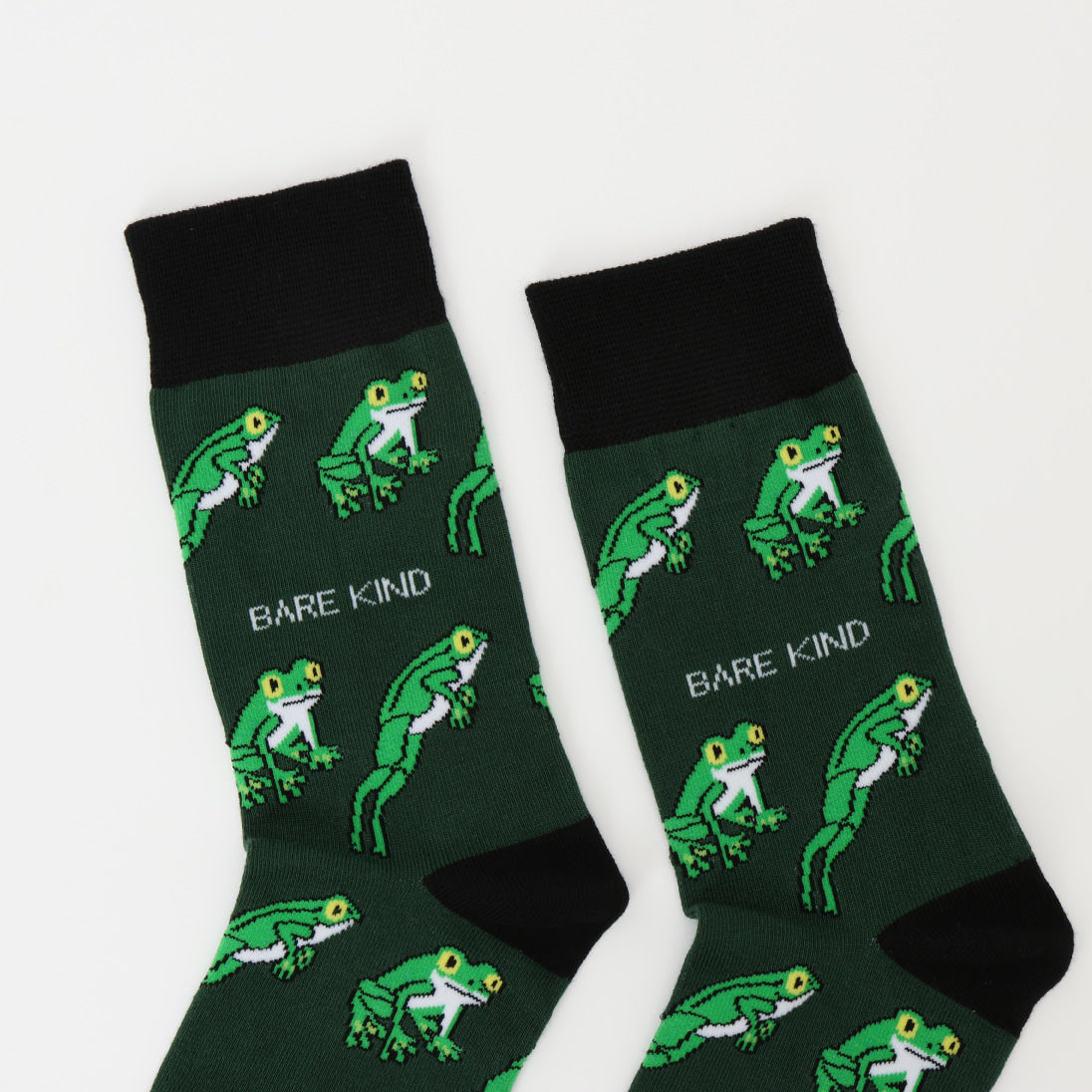
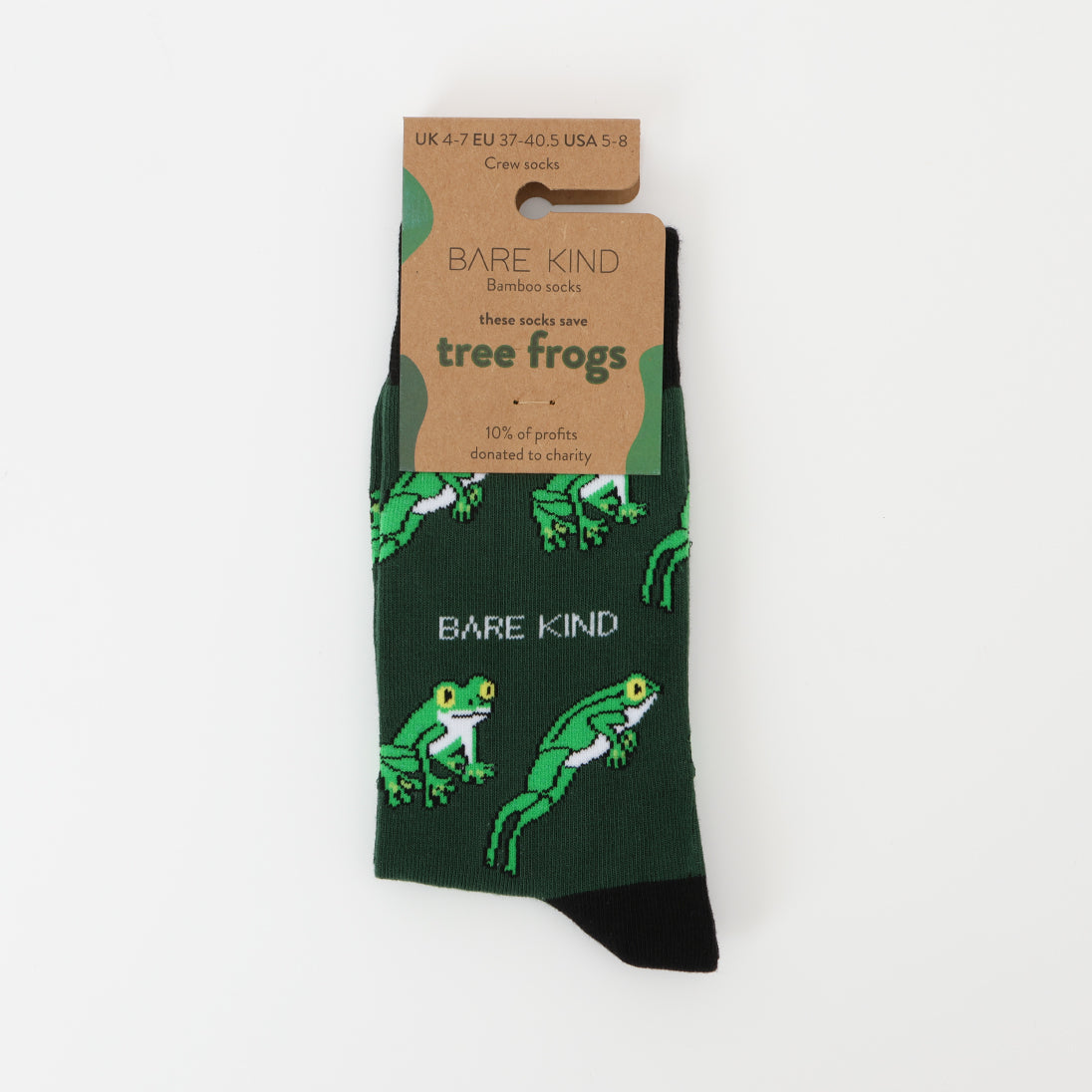
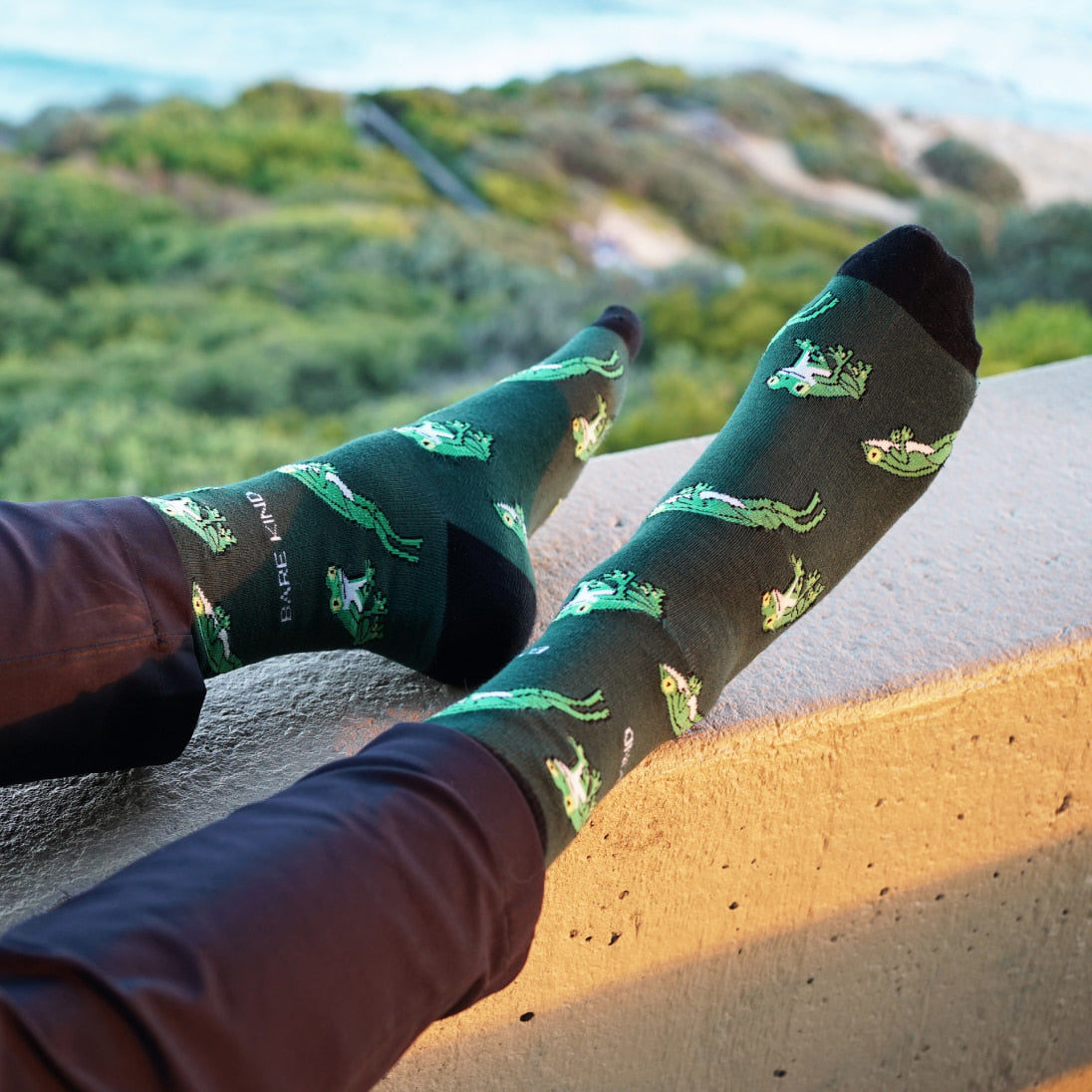
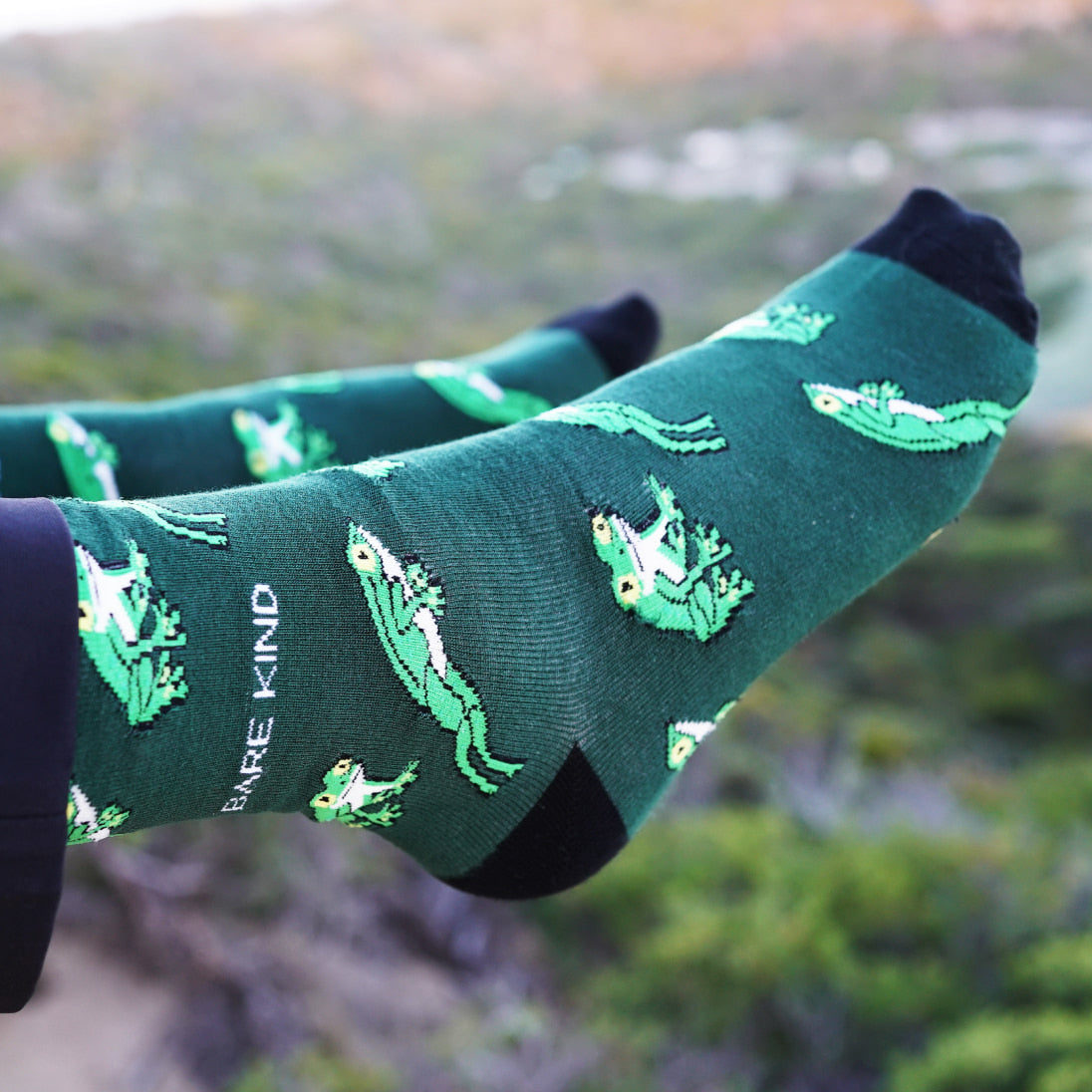
Bare Kind
Save the Capybara Bamboo Socks
Share
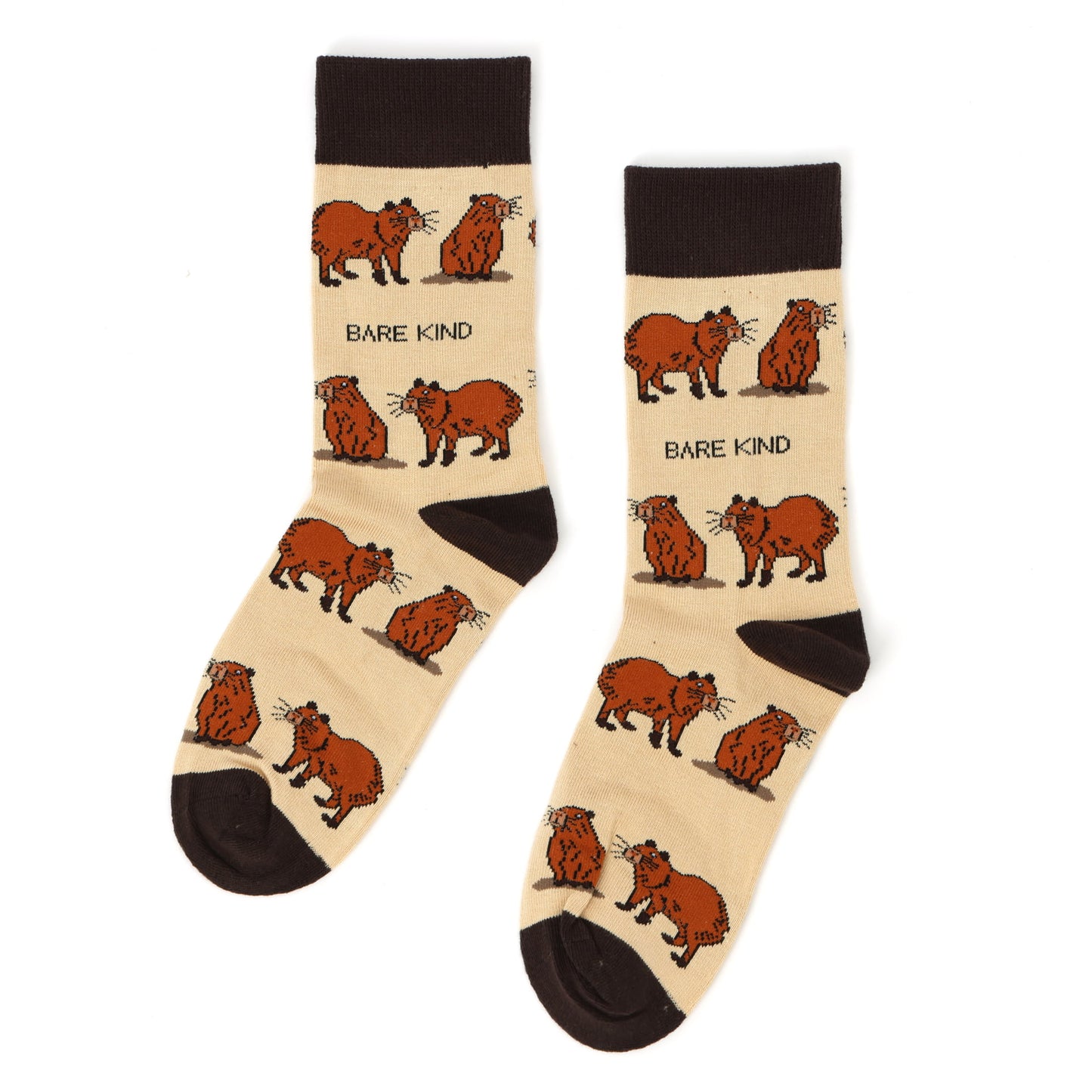






Our Philosophy
Restoring the biodiversity of our planet and its varied species is at the core of Bare Kind’s mission. By donating 10% of gross profits to charities that support the animals on our socks, we can continue fighting the fight against species extinction.
Bare Kind has been able to achieve an all-time high of donations in recent years. The business expanded its sock range to 40+ pairs and supports 35+ charities.
Our Charity Impact Reports highlight the projects we have been able to fund with our charity partners and the incredible animals we support.
Our hope is that something as humble as a pair of socks can make a lasting impression on our world and change it for the better. A huge thank you goes out to all our customers who have wanted to make a difference and empower the restoration of our planet with their socks.



